IAU-UNESCO Symposium 260
“The Role of Astronomy in Society and Culture”
(UNESCO Headquarters, Paris,
2009 January 19-23)
DEAR GALILEO (2):
Did you imagine this
4 centuries ago?
Now the Inquisition is just a sad remembrance
and astronomy is so great
that in January 2009
an entire ocean of bright minds and heavenly bodies
filled the UNESCO headquarters
to honor your memory
and to share their light.
And we were there,
happy
among so many stars
and
so much astronomical creativity,
with the wave of our astro-experience
and…
the proudest fireballs of cosmopoetry.
-Andrei Dorian Gheorghe-

SEQUENCES FROM LECTURES
Over 350 sky lovers (most of them professional astronomers)
from all over the world participated with
almost 200 lectures
(structured in 26 sessions, usually sustained in parallel in 8 halls
from the UNESCO foyer of conferences)
and over 60 posters
at the IAU-UNESCO Symposium 260.
As culture is the most generous subject of humanity,
this unleashed extraordinary energies and visions,
so all was a fascinating richness of cultural-astronomical themes:
archaeoastronomy, old astronomical beliefs,
astronomy and arts, astronomy and music, astronomy and literature,
astronomical heritage, astronomy and journalism, astronomy outreach,
activities against the light pollution, education through astronomy,
activities of planetariums and observatories, astronomy and religion,
astronomy for disadvantaged people, astronomy and children,
astronomy and architecture, social impact of astronomy, history of astronomy,
star parties, astronomy versus astrology, astronomical expeditions,
astronomy and technology, astronomy and pedagogy,
international schools and olympiads of astronomy,
connections between professionals and amateurs in astronomy,
and films with musical background
(for instance,
“Hawaiian Starlight” by the Canada-France-Hawaii Telescope team,
and “Astronomy Pictures of an Exhibition” by Jose-Francisco Salgado
and Adler Planetarium, USA).

David Valls-Gabaud (France, Paris Observatory,
Chair of the Scientific Organizing Committee of Symposium 260)
presented the inaugural lecture in the UNESCO Salle II:

Sequences from other lectures:
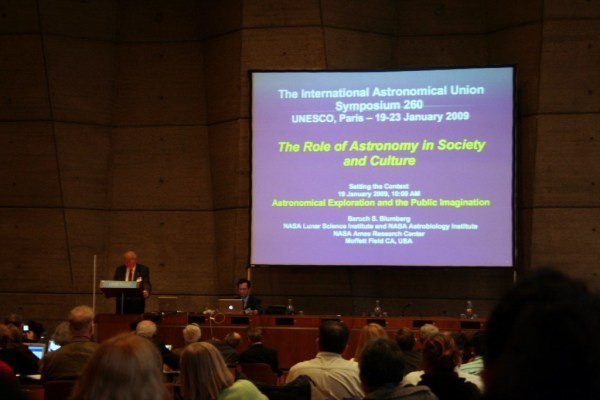
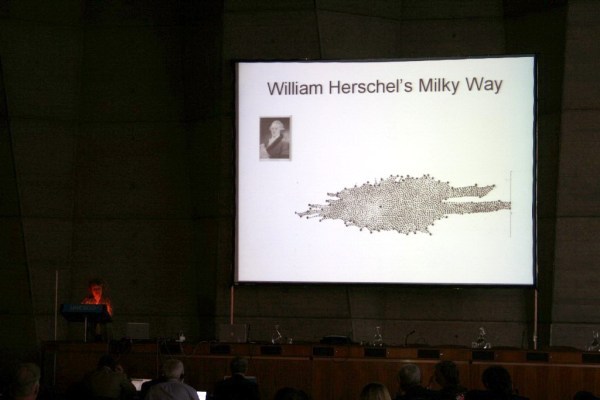
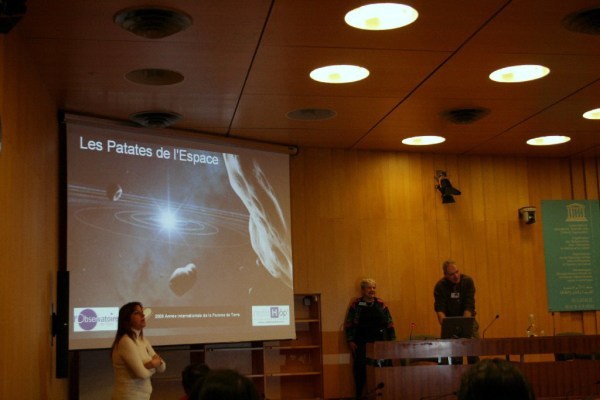
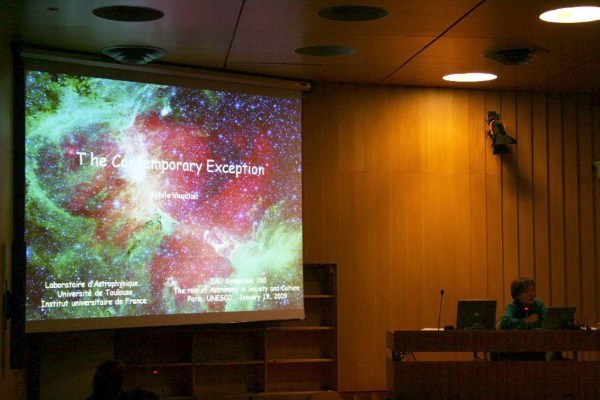
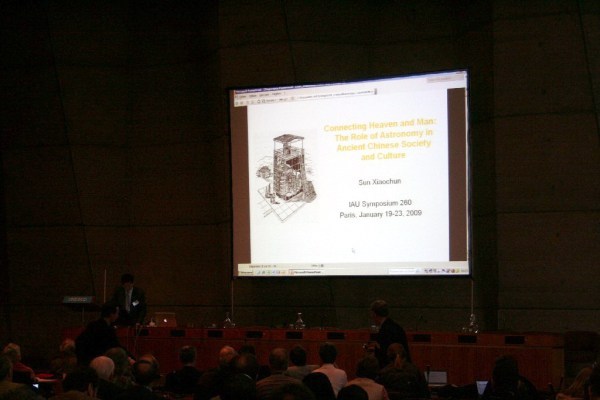
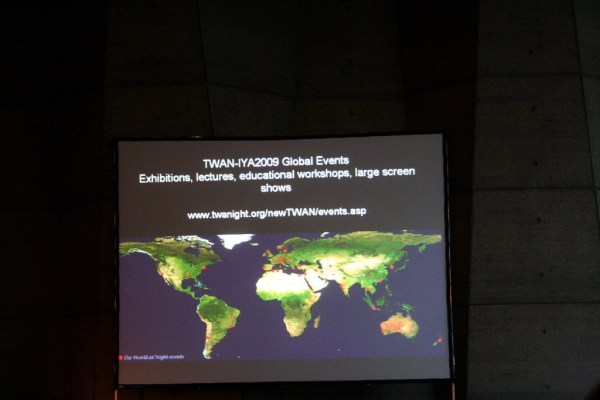
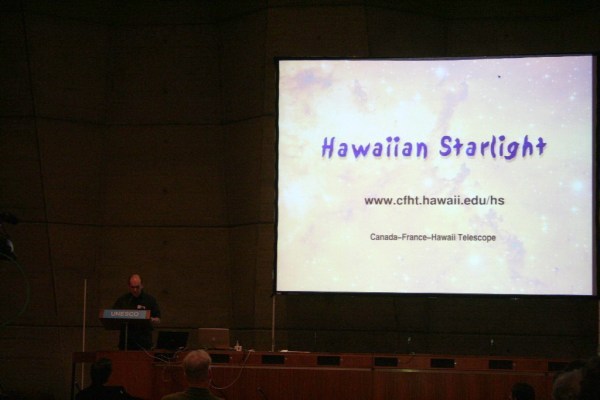
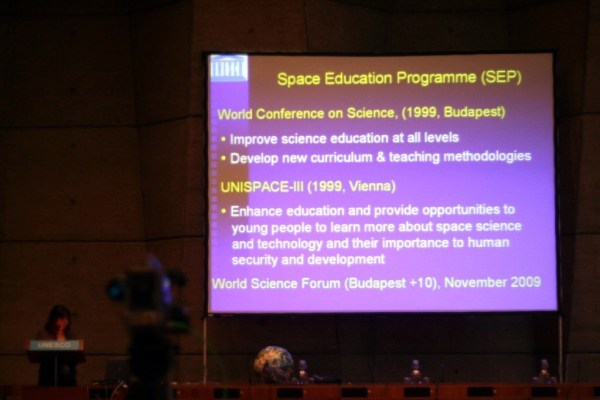
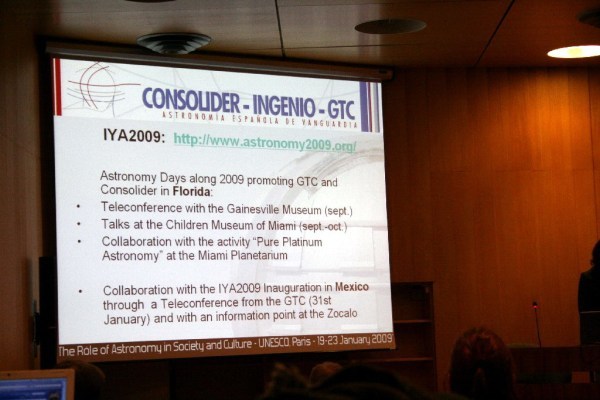
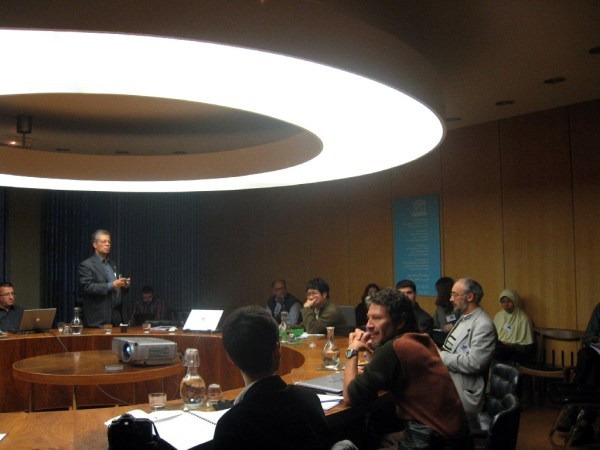
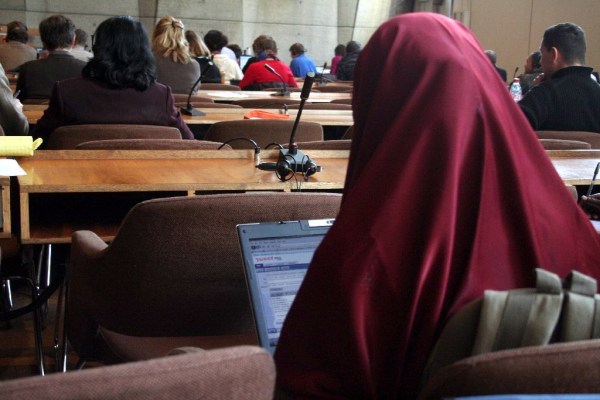
Mike Simmons (USA) talked about “Astronomers without Borders”,
the parent of “The World at Night”
(a Global Special Project of IYA 2009)
and a leader of “100 Hours of Astronomy”
(a Global Cornerstone Project of IYA 2009 -
coordinated by Jennie McCormick from New Zealand,
one of the laureates of SARM’s Intercontinental Astro-Ecologic Verse Tournament
in 2008):
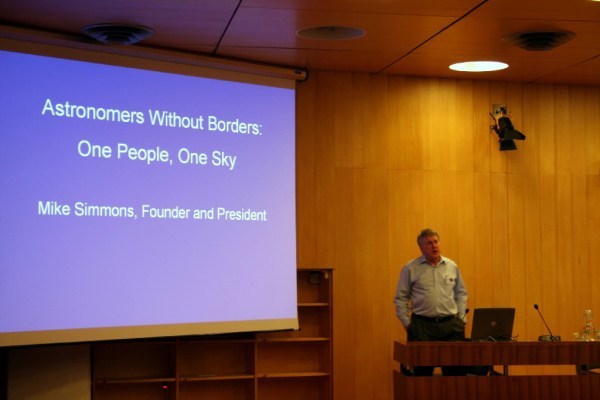
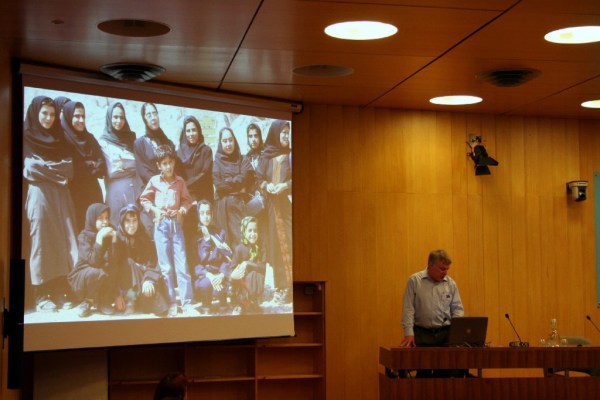
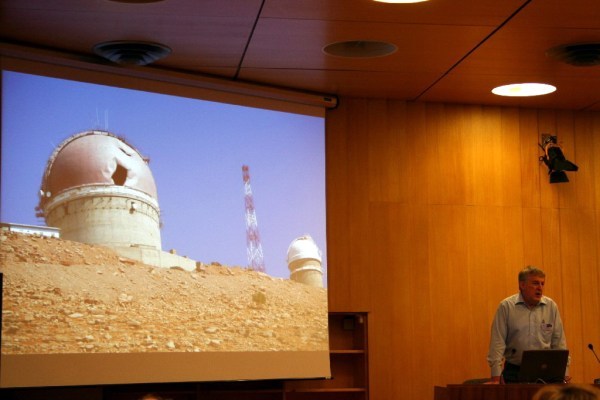
French teams talked about astronomy in difficult conditions
(for disadvantaged people, in prisons, and in hospitals):
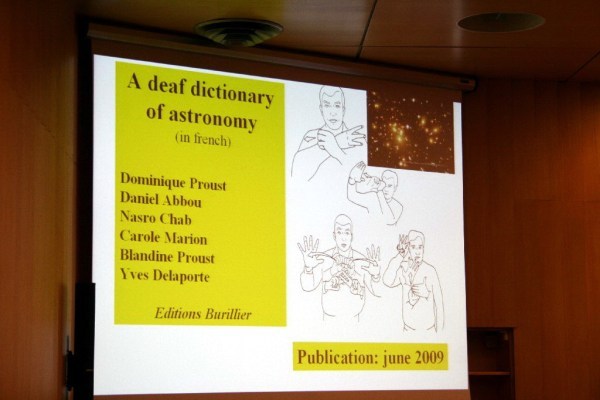
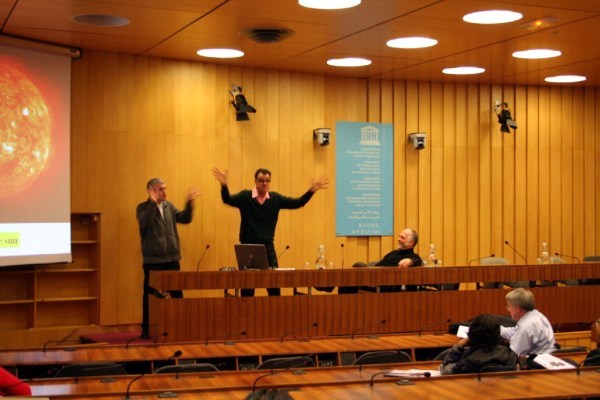
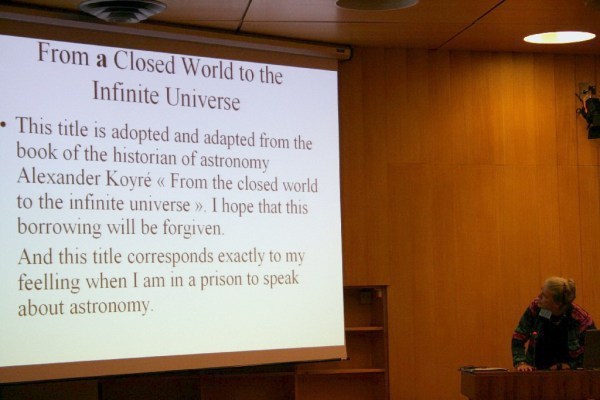
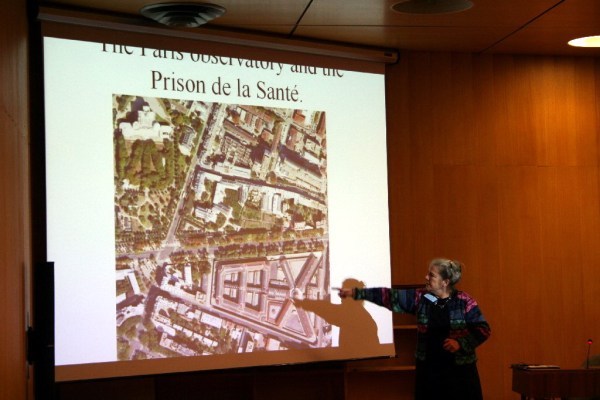
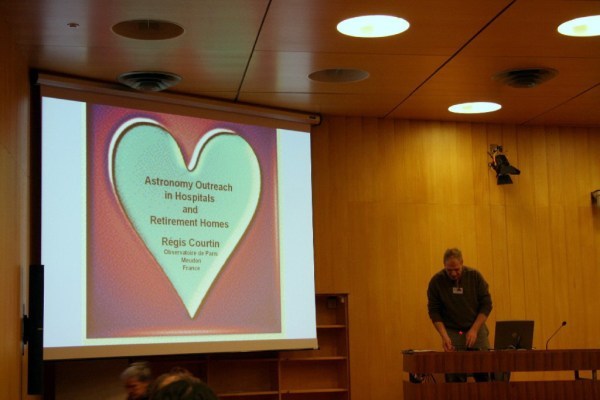

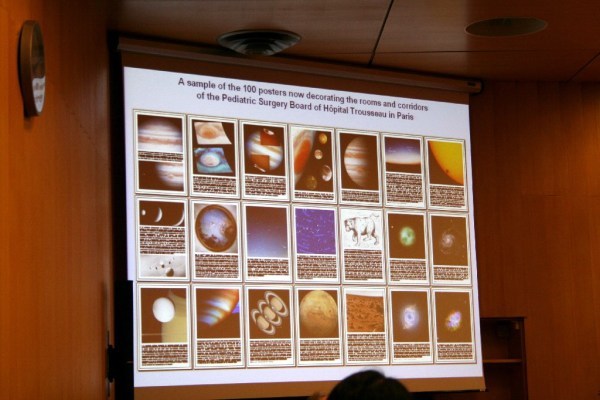
Knights of the clean sky:
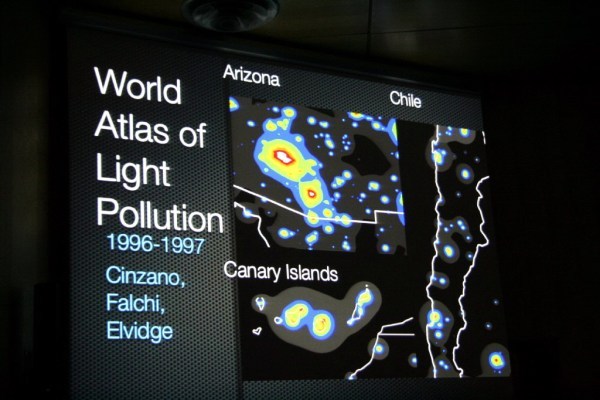
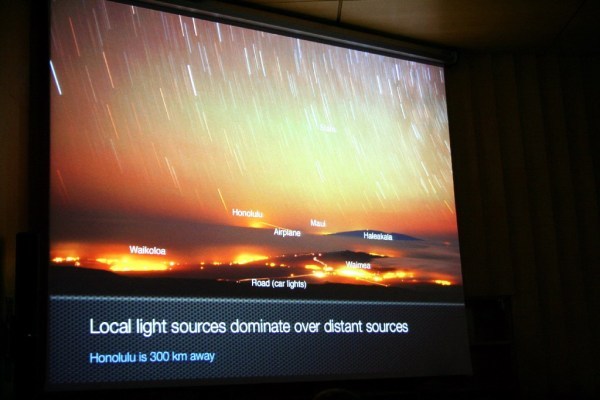
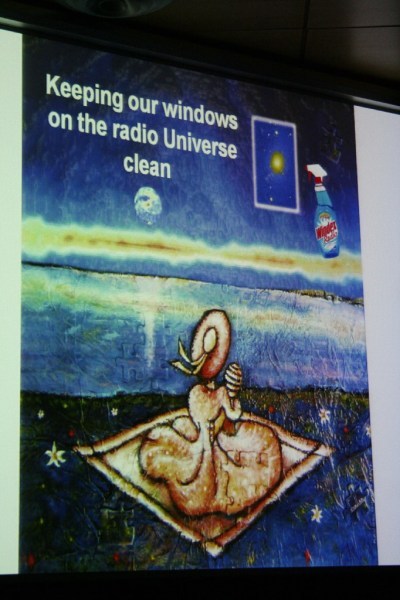
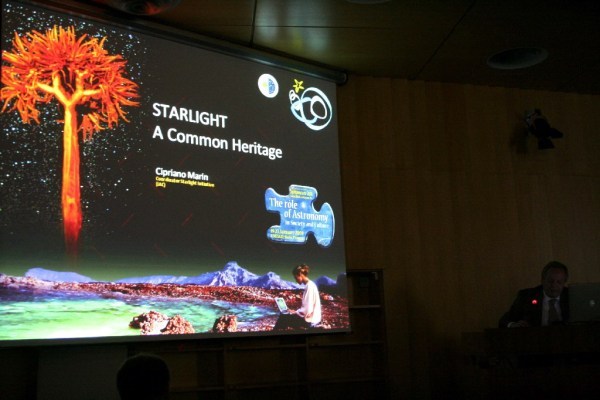
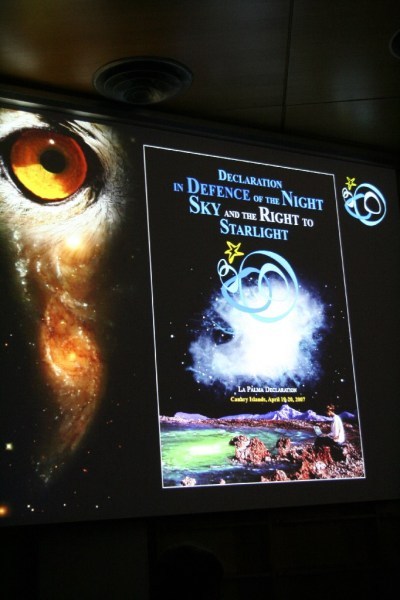
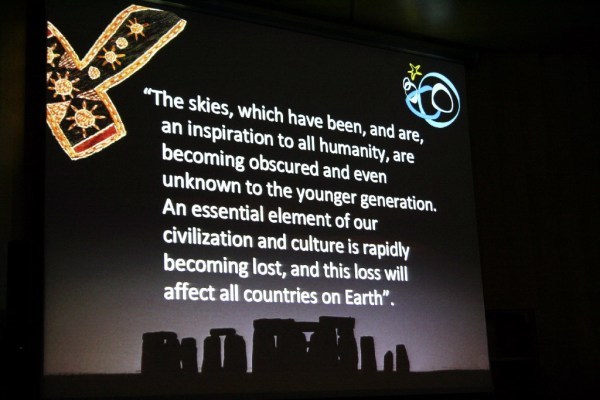
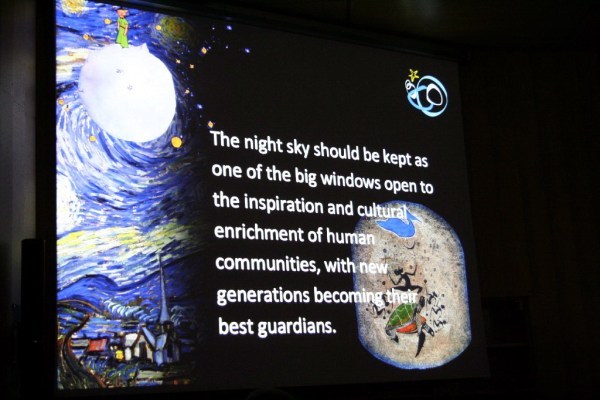
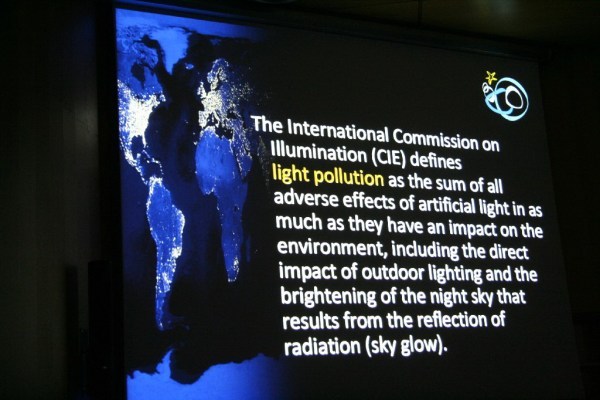
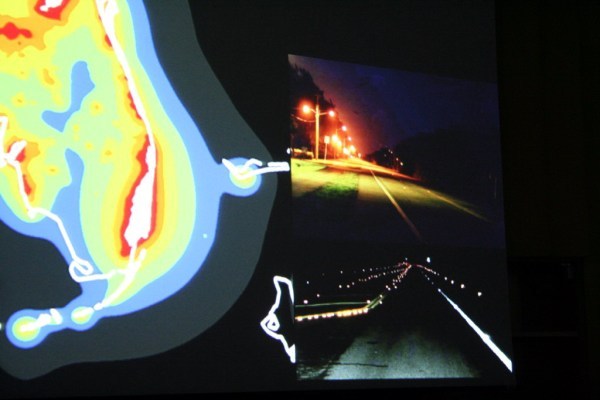
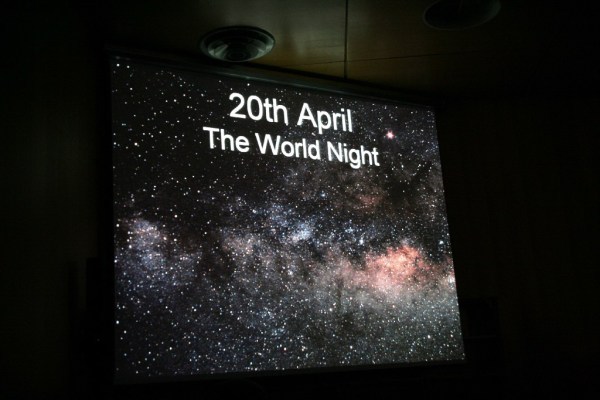
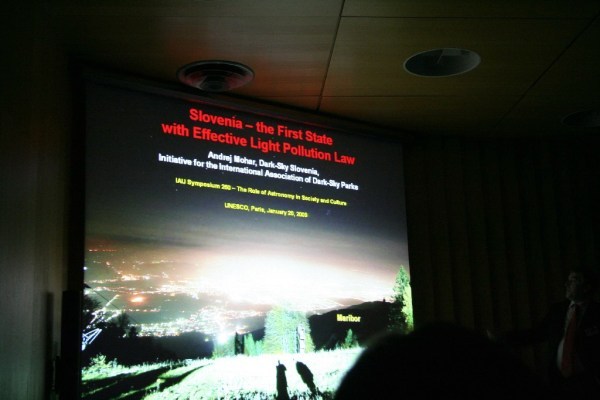
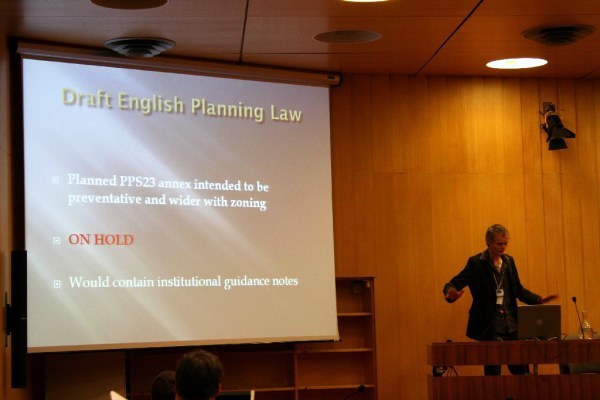
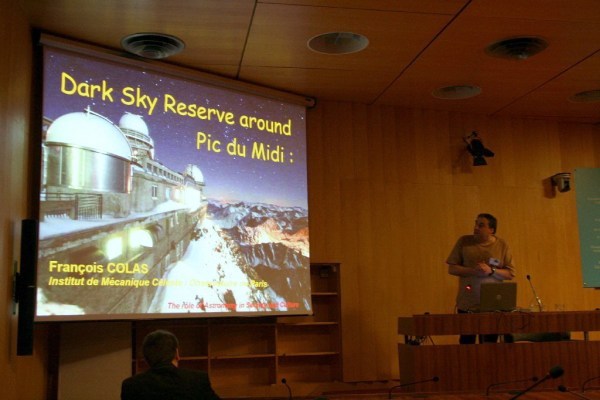
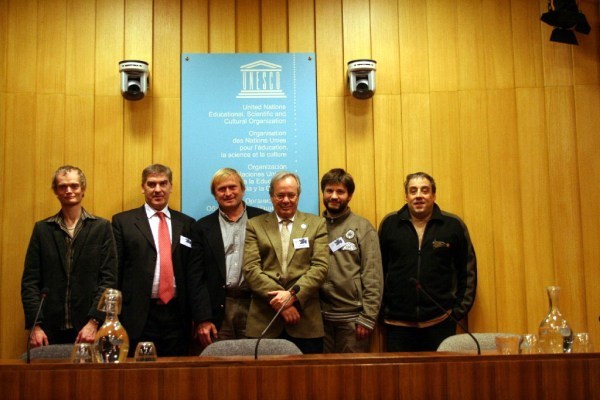
A talk about the European Society for Astronomy in Culture:
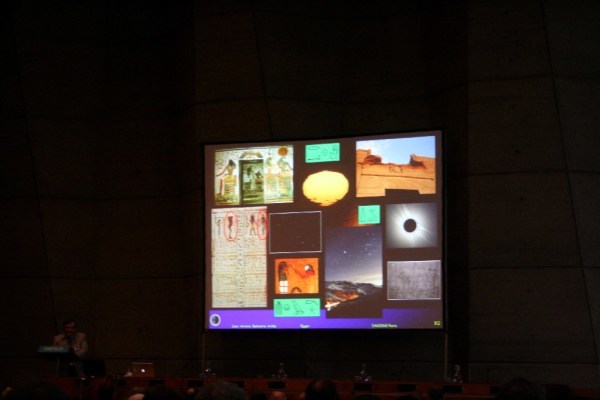
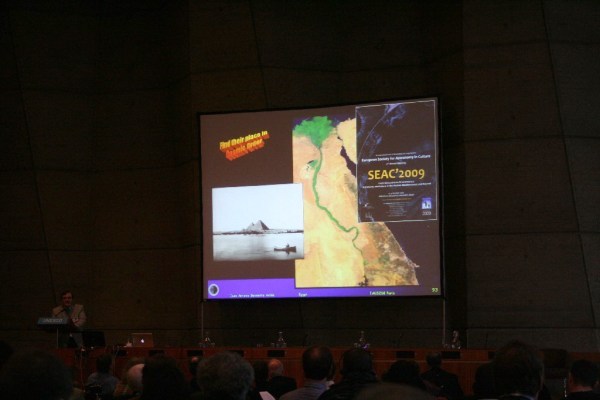
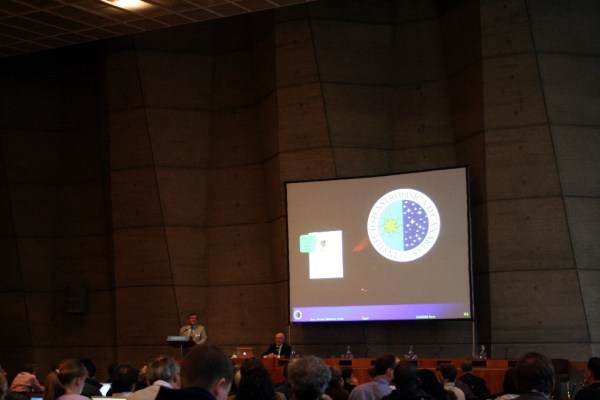
A talk about astronomy in Latin America:
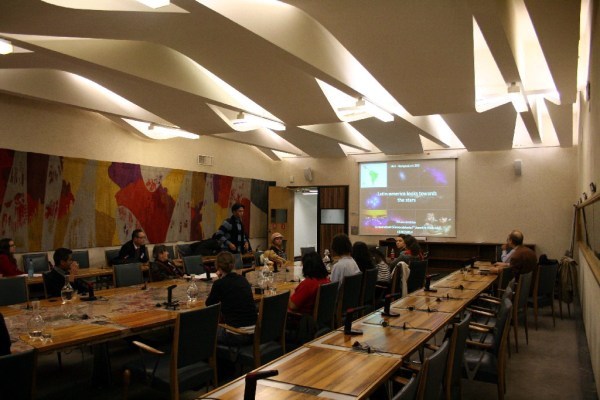
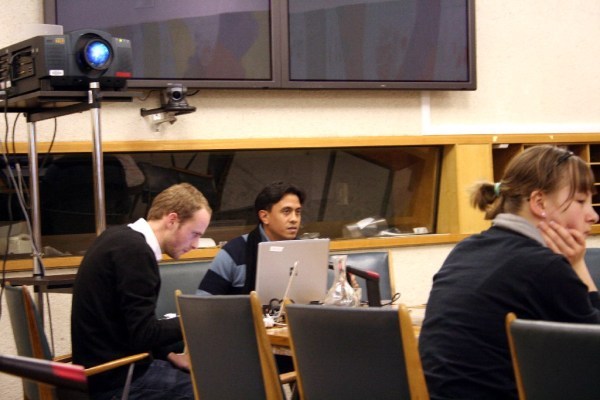
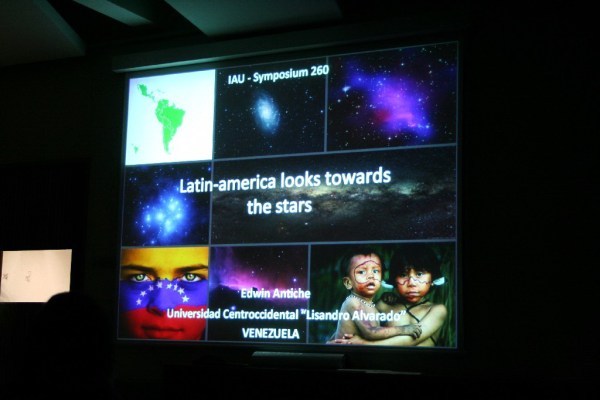
Dominique Proust (France, Paris Observatory,
Chair of the Local Organizing Committee of Symposium 260)
presented “the Music of the Spheres” - a lecture and a concerto
(including works by Galileo’s brother,
by William Hershel - discoverer of the planet Uranus,
by Bach - “How Bright is the Morning Star” -, etc.):
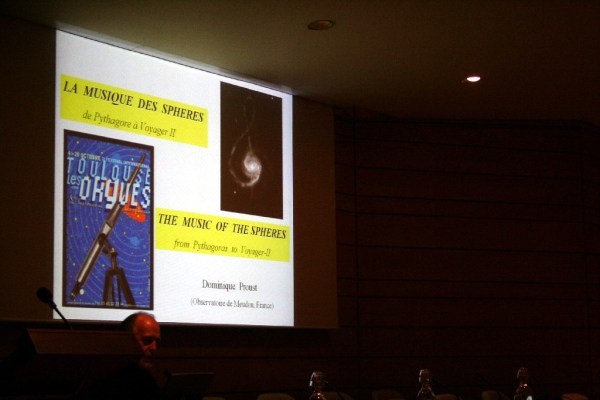
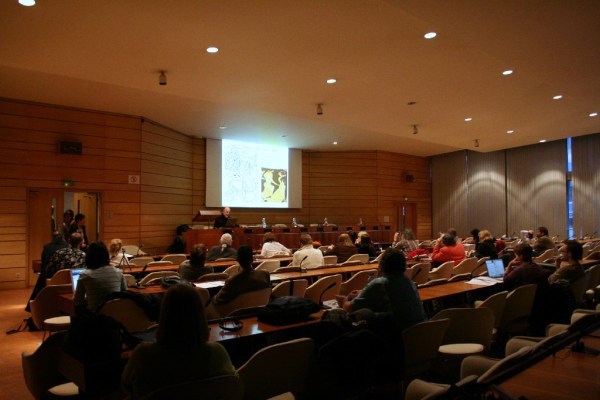
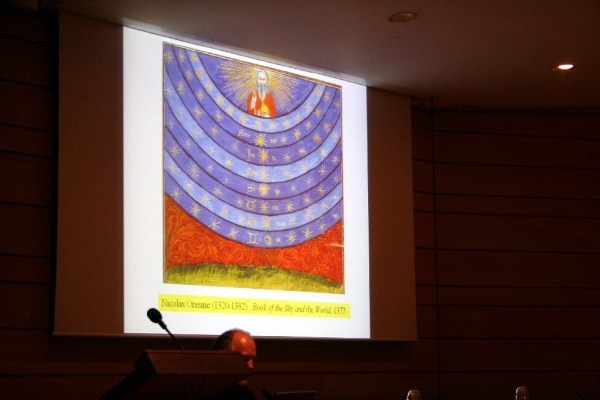
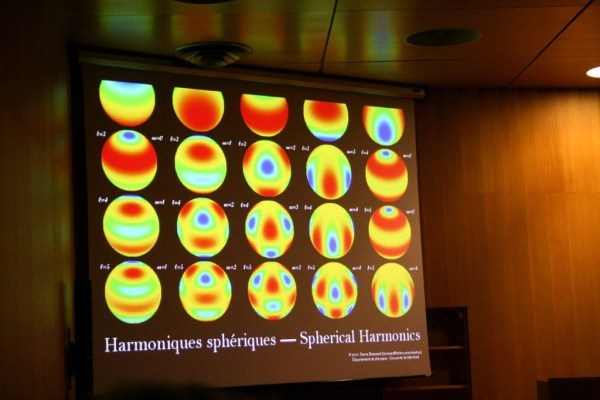
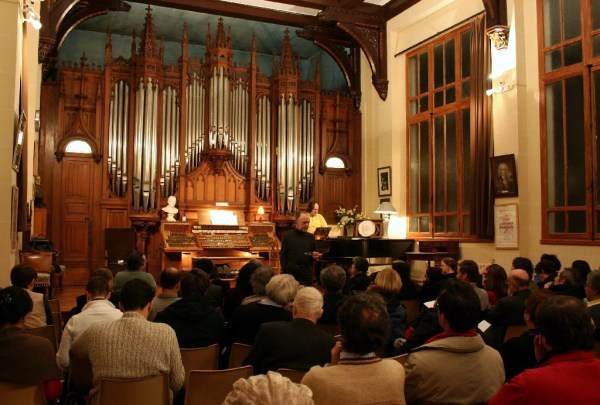
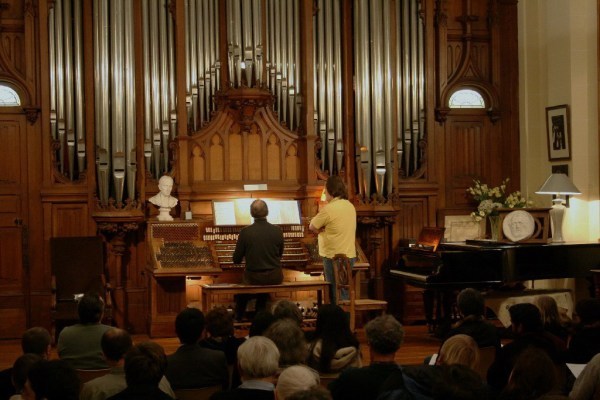
Carolina Odman (Holland) talked about the Universe Awareness (UNAWE)
Global Project for young children,
which also gave an exhibition:
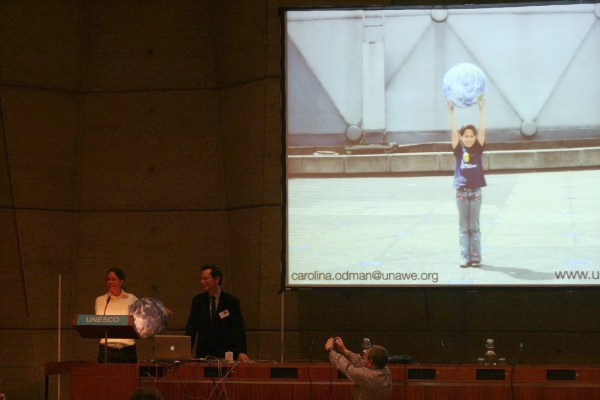
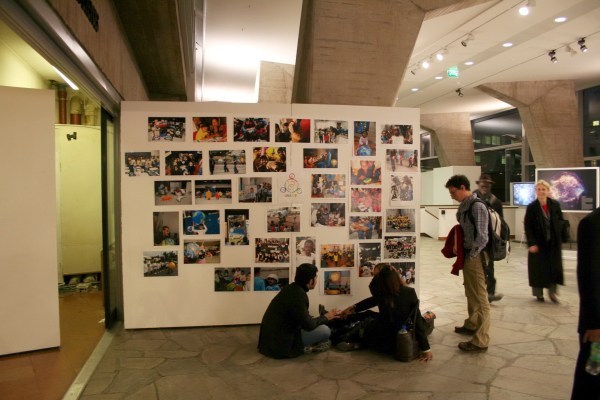
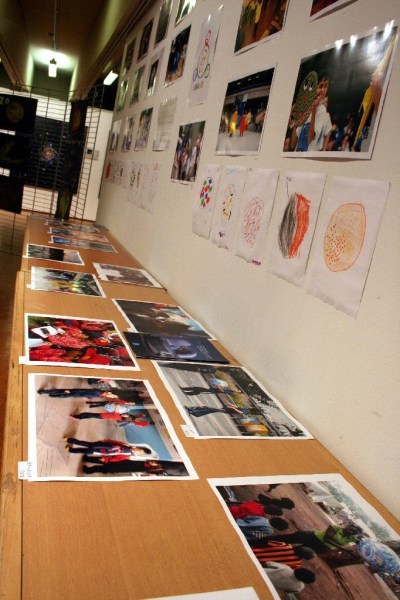
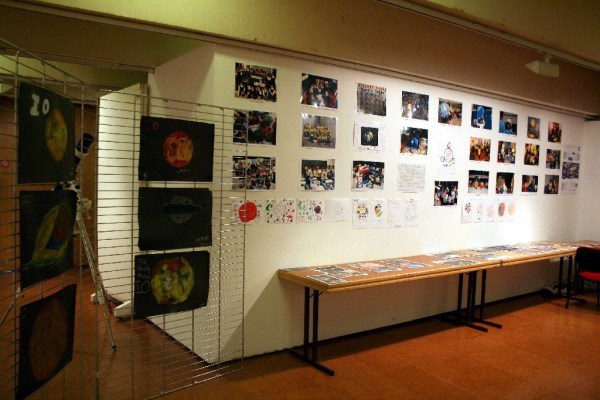
Gernot Meiser (Germany) and Pascal Demy (France)
talked about their amazing astronomical expedition,
which traversed Africa:
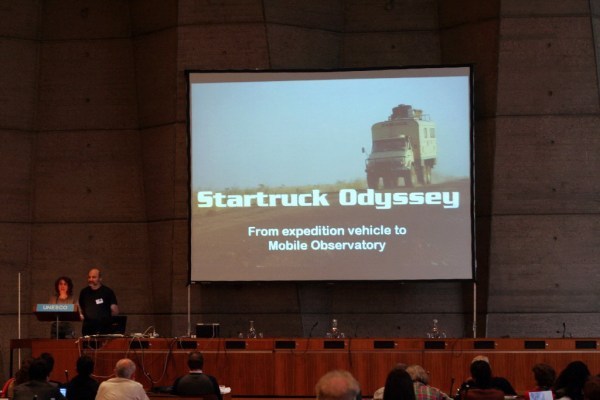
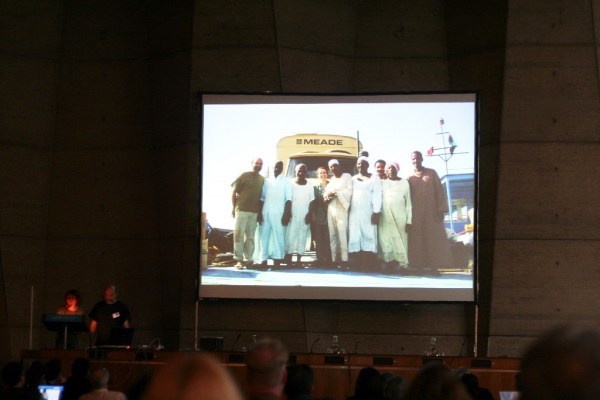
Meade telescopes were close to the lectures
of the IAU-UNESCO Symposium 260:
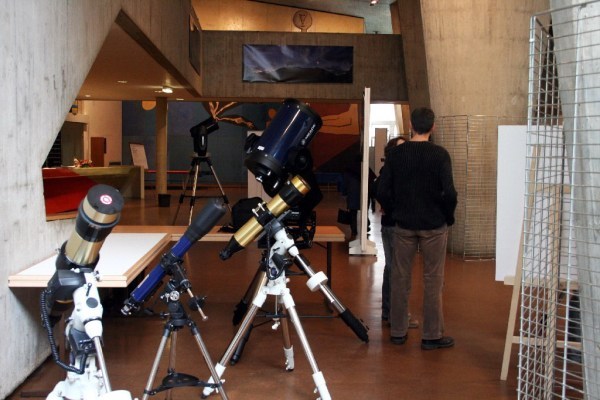
Julieta Fierro (Mexico) gave one of the most spectacular lectures,
with many elements of acting:
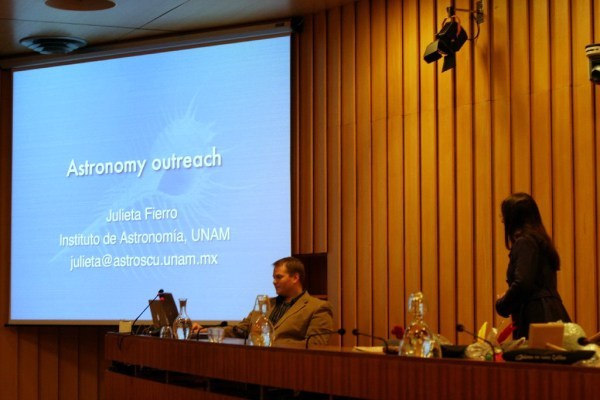
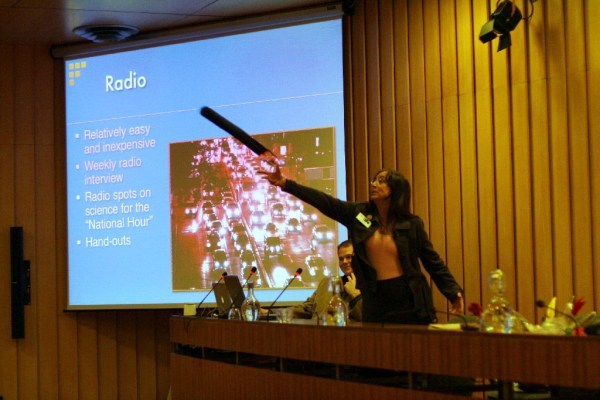
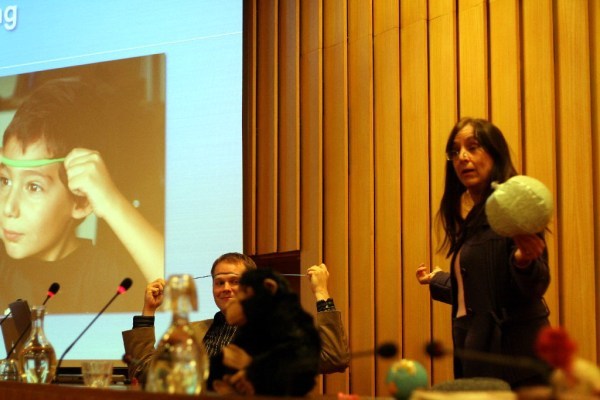
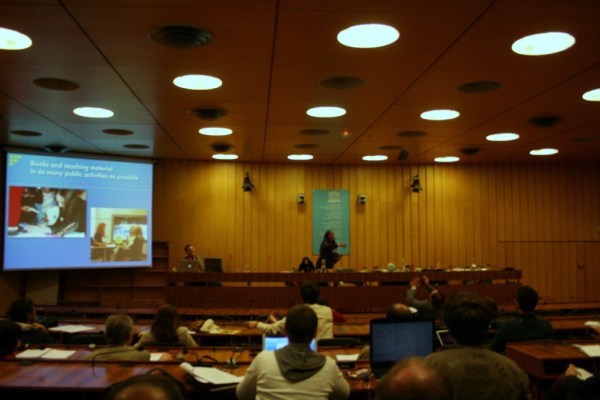
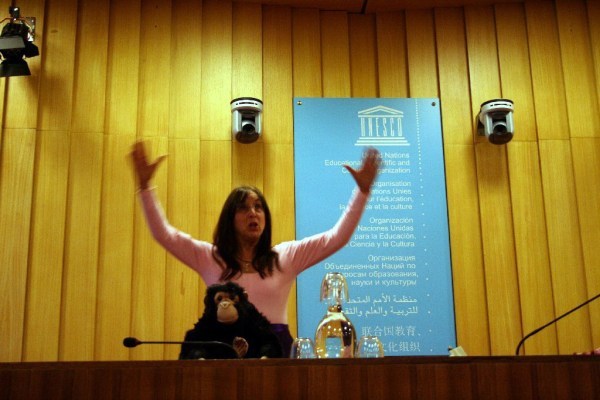
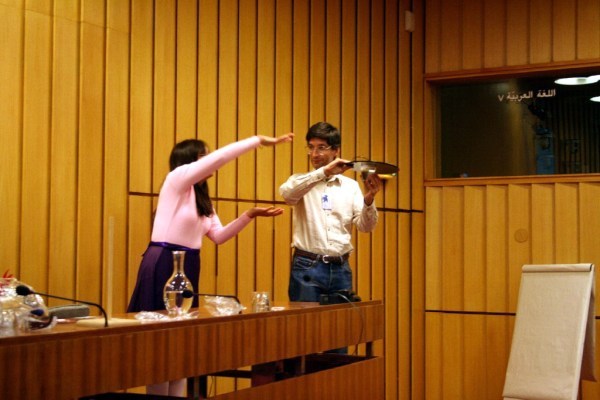
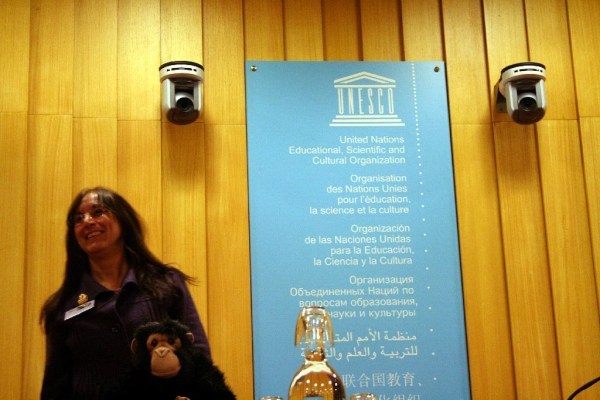
The Romanian journalist Catalin Mosoia
(Editor of “Ziarul Stiintelor”/“Science Newspaper”)
talked about astronomy and journalism:
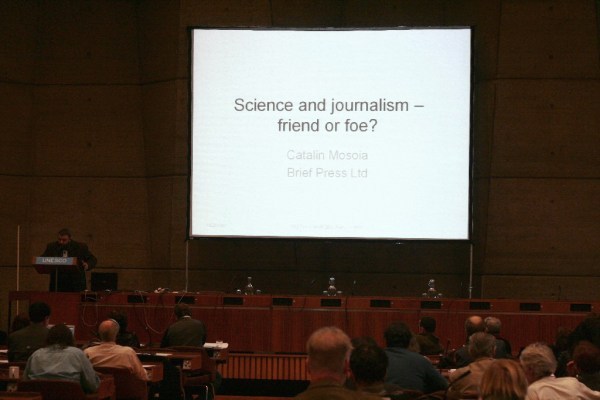
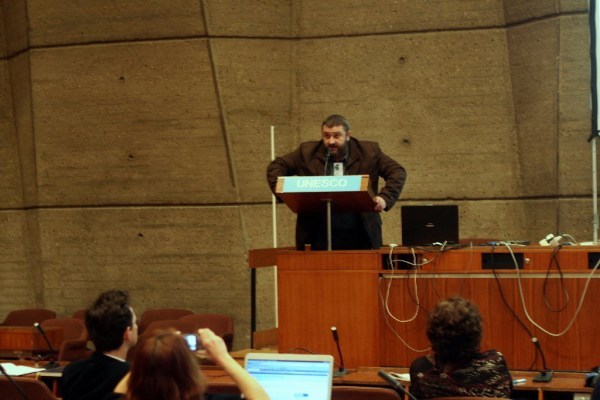
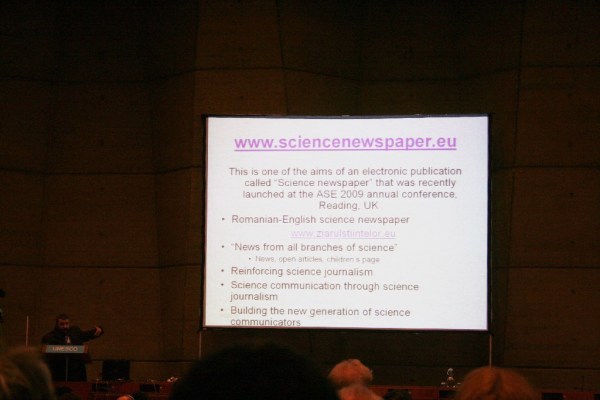
Magda Stavinschi
(former Director of the Astronomical Institute of Romanian Academy
and actual President of “Commission 46 - Education and Development”
of the International Astronomical Union)
talked about astronomical challenges:
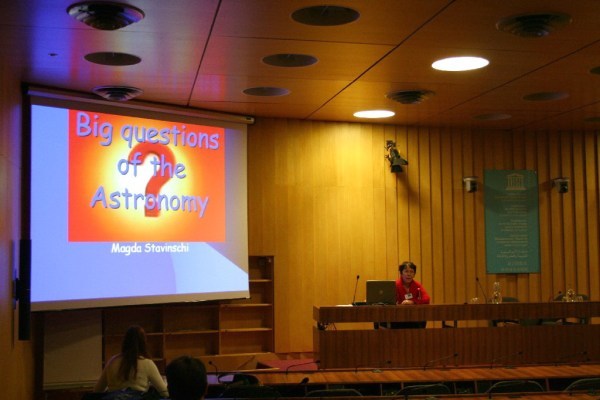
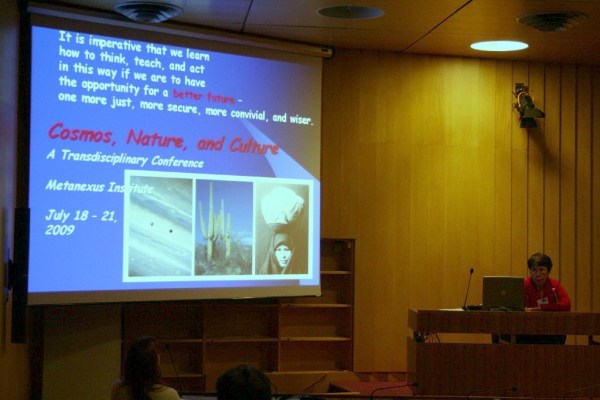
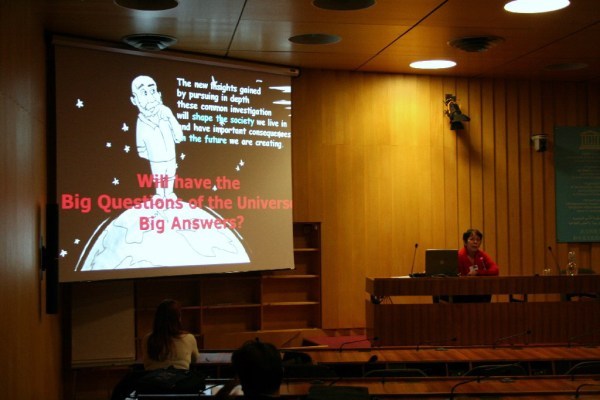
The Romanian group at the IAU-UNESCO Symposium 260
(Magda Stavinschi, Catalin Mosoia, Dimitrie Olenici,
Andrei Dorian Gheorghe and Valentin Grigore):

A Romanian-American dialogue on astronomical poetry
(Andrei Dorian Gheorghe and Kala Perkins):

…And an international contest
for the most astronomical beard of the IAU-UNESCO Symposium 260:

ASTRONOMICAL MEDEA

The Greek Theatre “Arcadia” performed Euripides’ ancient drama “Medea”
in the UNESCO Salle II,
on background of images from antiquity to our times
and electronic music:









POSTERS
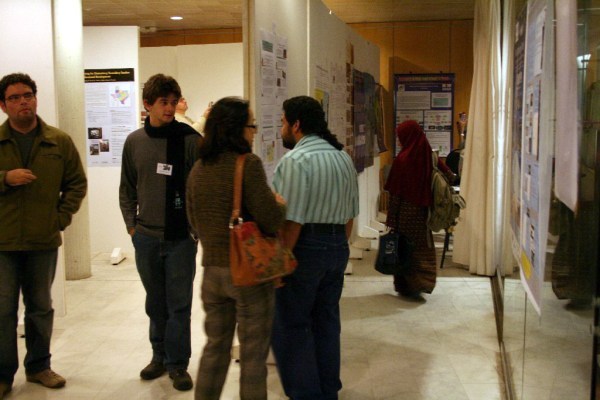
Over 60 posters from all over the world were displayed
in the UNESCO Salle des Actes:






Some of the most beautiful posters came from
Spain, France, Philippine, Australia, Brazil, Venezuela, China,
Italy, Peru, Algeria, Taiwan, Argentina, etc.:
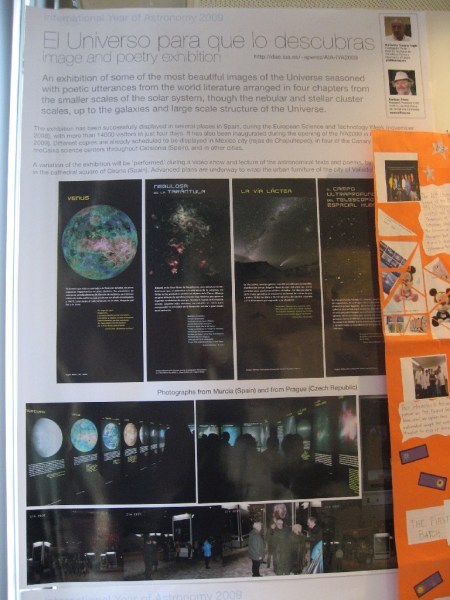
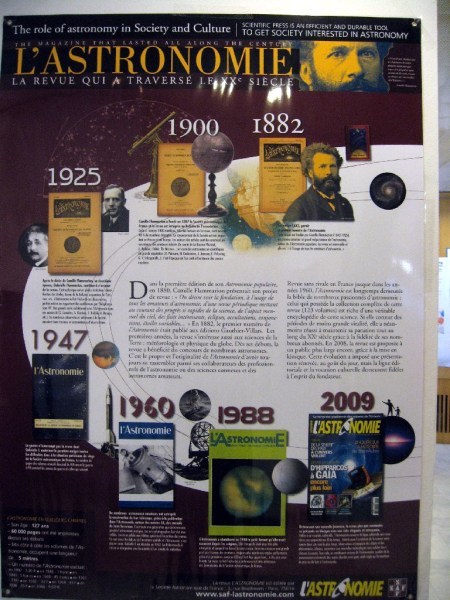
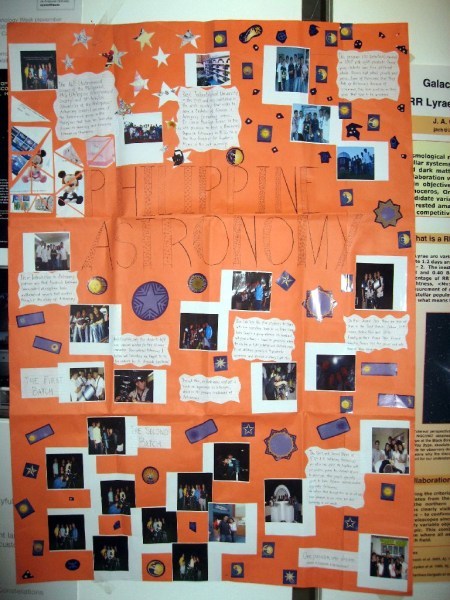
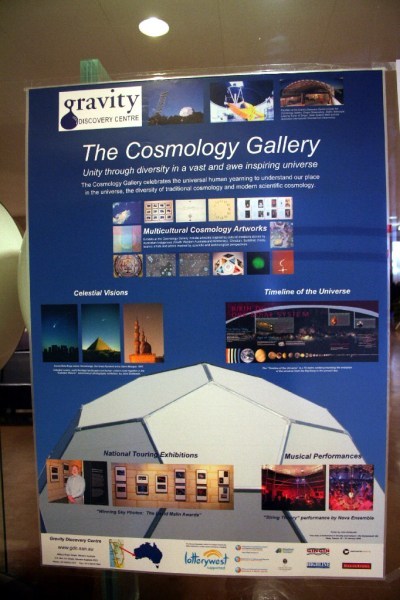
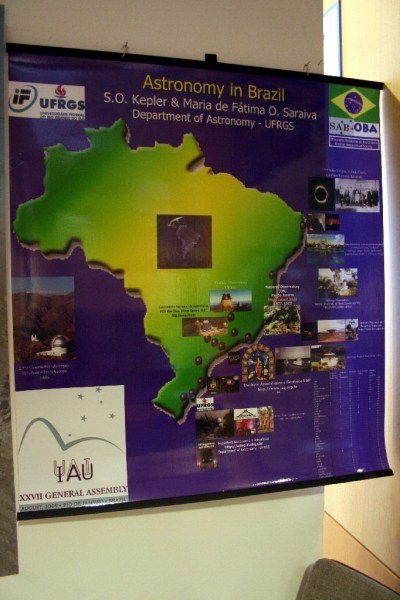
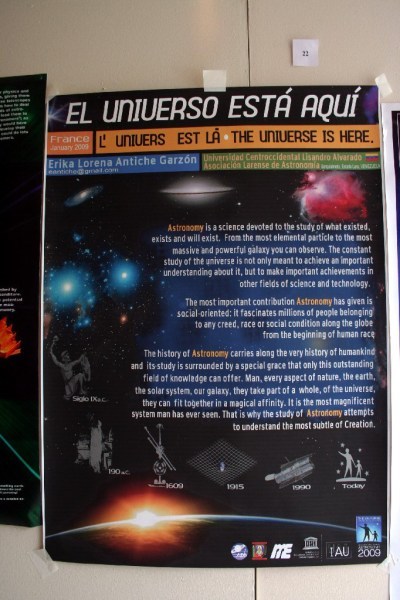
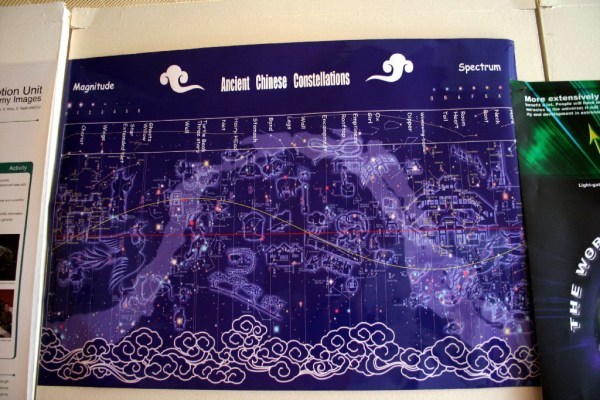
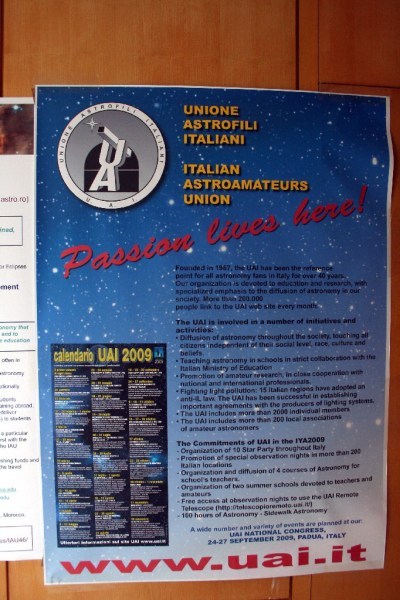
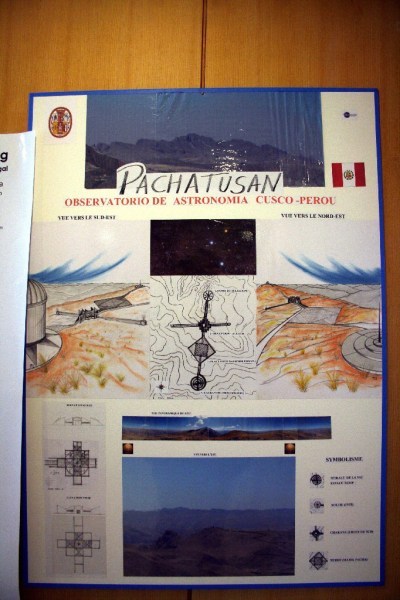
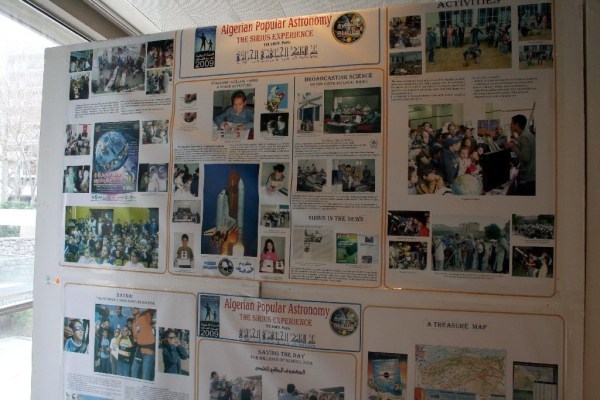
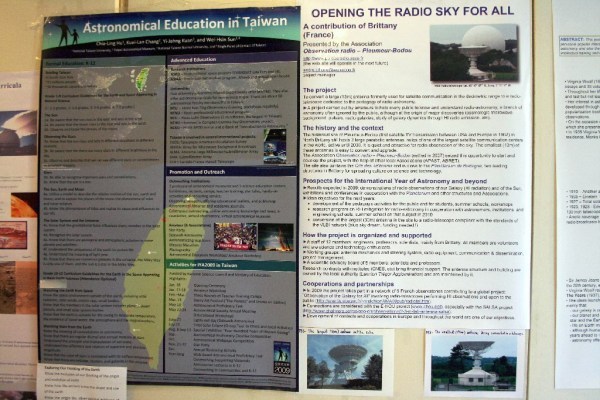
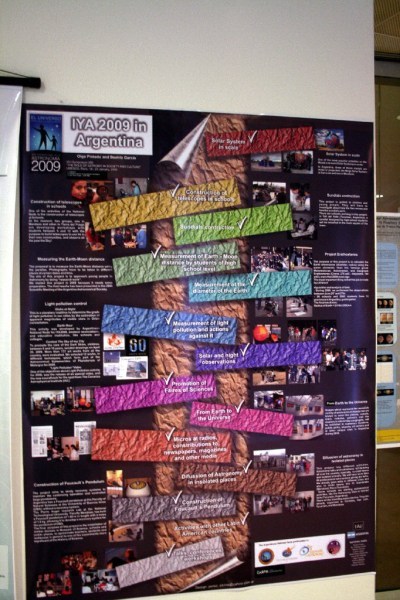
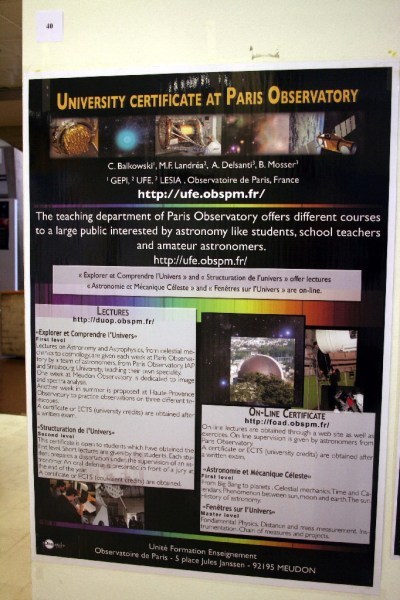
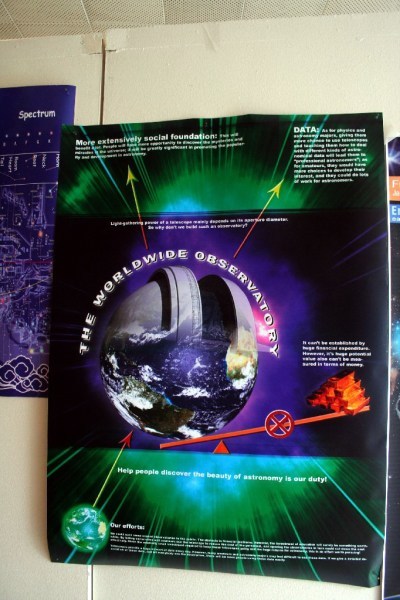
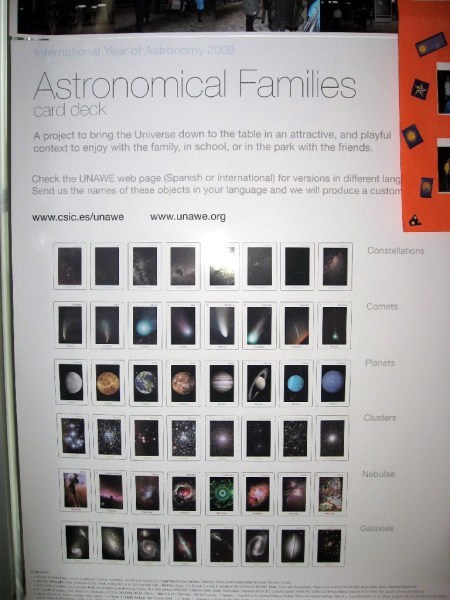
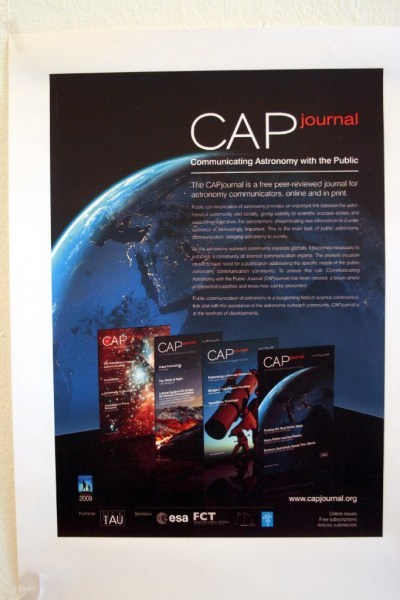
Magda Stavinschi displayed two posters from Romania:
-one by her colleague from the Astronomical Institute of Romanian Academy,
Doina Ionescu, entitled “Virginia Woolf and Astronomy”;
-one about the pursues of the IAU Commission 46, presided by herself:


A few astronomical poems from France
(“Desirs d’Etoils” by Daniel Benest from l’Observatoire de Nice):

An Italian social-astronomical protest:

…And astronomical humour from the TENPLA Japanese project:



DIMITRIE OLENICI’S POSTER

Dimitrie Olenici,
an old Romanian teacher of physics,
a well-known astronomer at Planetarium Suceava
and also a member of SARM,
displayed a poster entitled “Solar Eclipse Motifs in Romanian Old Architecture”,
for which he had worked many years.
In fact, he had exhibited the first variant of this poster 10 years before,
at the greatest international event organized by SARM,
EuRoEclipse Perseids 1999.
Dimitrie Olenici’s poster (for which he was helped by his wife Maria
and the British astronomer Thomas Goodey) included images
with solar motifs and symbols from Romanian houses, gates, churches,
cemeteries and Easter eggs, along with necessary explanations,
and was supplemented with similar images from Norway, Italy and Turkey:


Dimitrie Olenici presented his poster to the International Astronomical Union
President, Catherine Cesarsky (France):


An admirer of Dimitrie Olenici’s poster:

Dimitrie Olenici at the IAU-UNESCO Symposium 260:

Dimitrie Olenici (right) in the Romanian group
at the IAU-UNESCO Symposium 260:

SARM POSTER
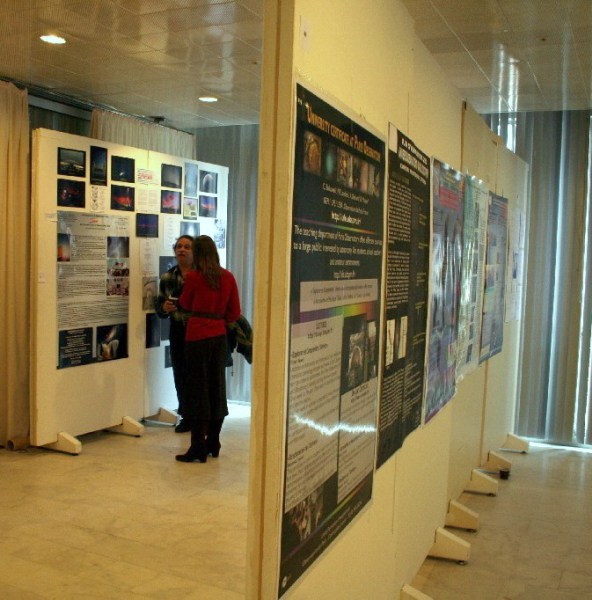
During the IAU-UNESCO Symposium 260,
the SARM Astro-Photo-Art-Poetry Exhibition changed its aspect and position
in the Salle des Actes (now full of posters), being enriched with a poster,
“The Romanian Society for Meteors and Astronomy
and Its Astronomy-Culture-Art-Education-Society Concept”,
in which the authors Valentin Grigore and Andrei Dorian Gheorghe
presented the evolution of the astronomical activities of SARM
and their human connections, from the Perseid Event to the international circuit,
insisting in the last part on the cultural-cosmopoetic activities.
The SARM poster was completed by
two astropoetic mottos by Valentin Grigore and Andrei Dorian Gheorghe,
two astrophotographs by Valentin Grigore
(-one with heavenly bodies over Tower Chindia - or Dracula’s Tower -
in Targoviste, the town of the SARM headquarters;
-one with 7 Leonid meteors from 1998, which had been first published on the cover
of WGN - the Journal of the International Meteor Organization),
two images from SARM’s Perseid Event,
and finally an astropoem by Andrei Dorian Gheorghe
(dedicated to the International Year of Astronomy 2009),
next to a 2004 artwork by Calin Niculae.
The Romanian poster also included references to other
international cultural projects of astronomical inspiration:
Meteor Beliefs Project (led by Alastair McBeath from U.K.
for the International Meteor Organization publications)
and Astropoetica (led by Emily Gaskin from U.S.A., and that cooperates
especially with members of the Science Fiction Poetry Association),
for which SARM is a regular contributor.
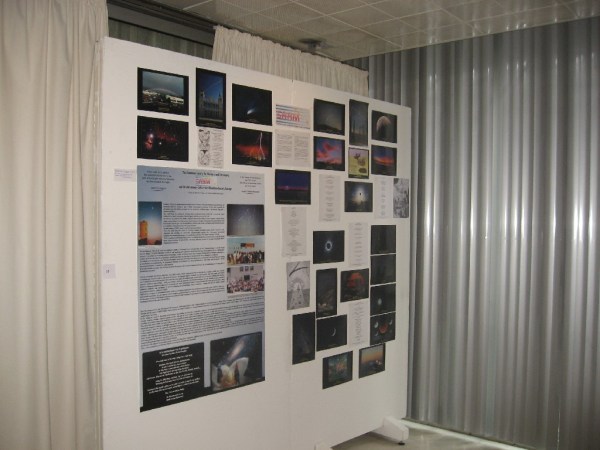
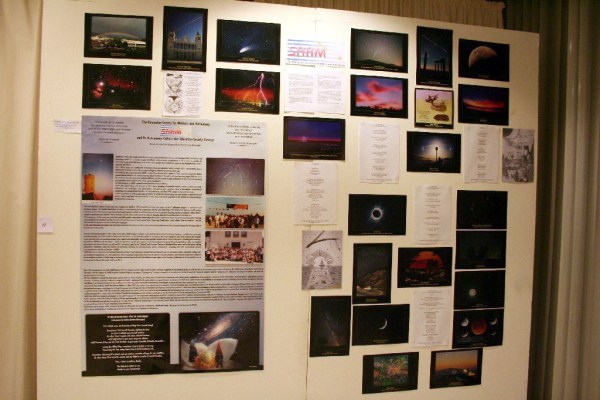
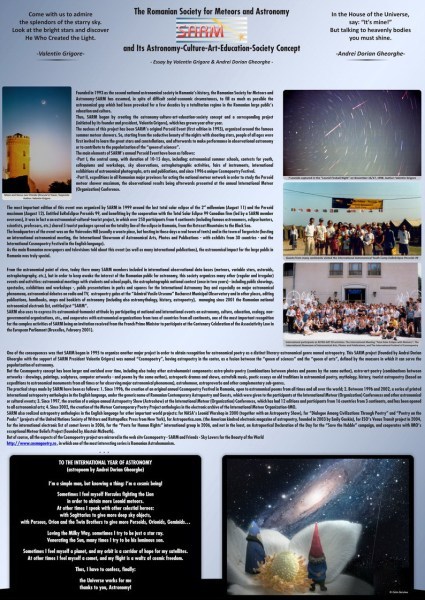
The American astro-art-poet Kala Perkins
admired the SARM Exhibition + Poster:

Andrei Dorian Gheorghe explained some artistic aspects
to the French artist Lionel Bret:

Inter-hemispheric friendship:
the Australian astronomer and artist John Goldsmith
between Andrei Dorian Gheorghe and Valentin Grigore:

Inter-hemispheric friendship:
Valentin Grigore and
the Chilean astronomer and journalist Eliette Angel:

Andrei Dorian Gheorghe spoke about astropoetry
with Jocelyn Bell Burnell (U.K., Oxford University):

Jocelyn Bell Burnell (co-discoverer of the first radio pulsars,
multiple international laureate for services to astronomy,
and the first woman President of the UK’s Institute of Physics)
co-edited in 2003 an excellent anthology, Dark Matter - Poems of Space
(including classical, modern and contemporary astronomical poems by authors
from the English language space)
and, in the first day of the Symposium 260,
presented her academic investigation, “Astronomy and Poetry”,
based on that book.
(In the same day, Evelyn Urama from University of Nigeria
gave another lecture with poetical quotations,
“The Sky Entities as represented in African Literature”.)
After Jocelyn Bell Burnell’s lecture, during the usual questions and comments,
Andrei Dorian Gheorghe enumerated the three major
international contemporary projects of astropoetry on the Internet:
-Meteor (Contemporary) Poetry Project (in the electronic archive
of the International Meteor Organization);
-Astropoetica - Mapping the Stars through Poetry (in USA);
-Cosmopoetry - SARM and Friends (in Romania, Europe).

Andrei Dorian Gheorghe explained another dimension of the theatre,
the Astropoetry Show (created exclusively by sky lovers
at the International Meteor Organization Conferences),
to Virginia Corless (Cambridge Institute of Astronomy, UK):

(On January 19th, Virginia Corless presented a captivating lecture,
“Stars on Stage and Sky: Physics and Astronomy in the Theatre”.)

The Romanian group
(Magda Stavinschi, Andrei Dorian Gheorghe, Dimitrie Olenici,
Catalin Mosoia, Valentin Grigore)
in front of the SARM Exhibition and Poster
at the IAU-UNESCO Symposium 260:

SARM LECTURE
(Note:
All the photographs of the SARM lecture were made by Catalin Mosoia)

PART I: MAIN CONCEPTS
Enthusiastic to participate at a world event where
so many themes had been touched in the past by SARM activities,
Valentin Grigore (as main technician) and Andrei Dorian Gheorghe (as main speaker)
presented their lecture,
“The SARM and Its Essential Concepts of Activity:
Astronomy-Culture-Art-Education-Society,
and Cosmopoetry”
(2009 January 22nd, Session 23, UNESCO Salle V),
composed of two parts:
a talk and an Astropoetry Show.
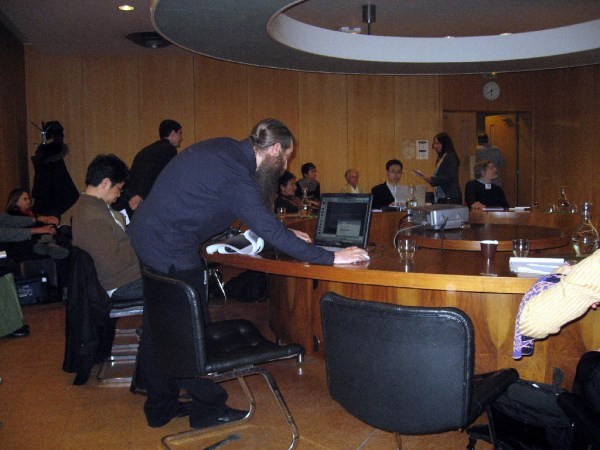
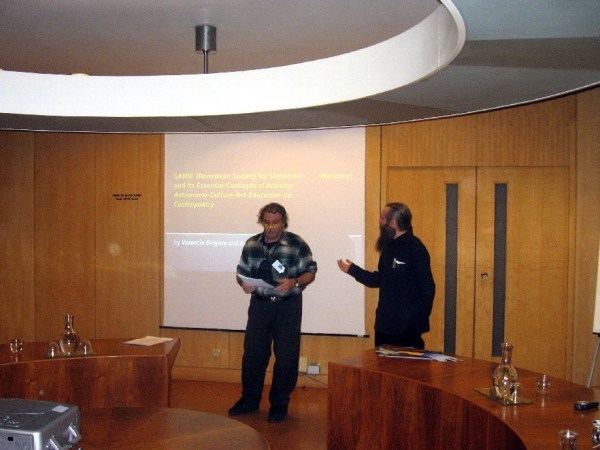
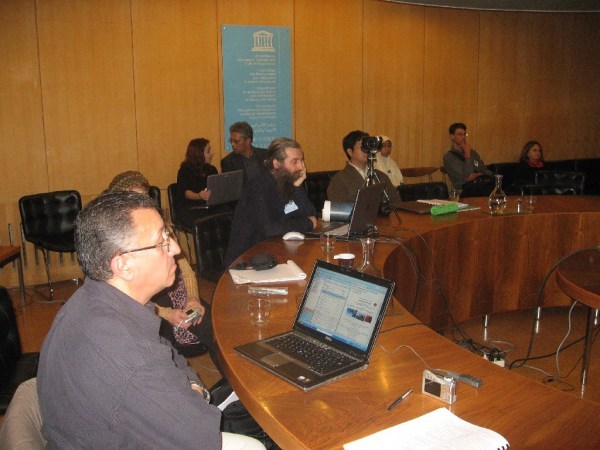
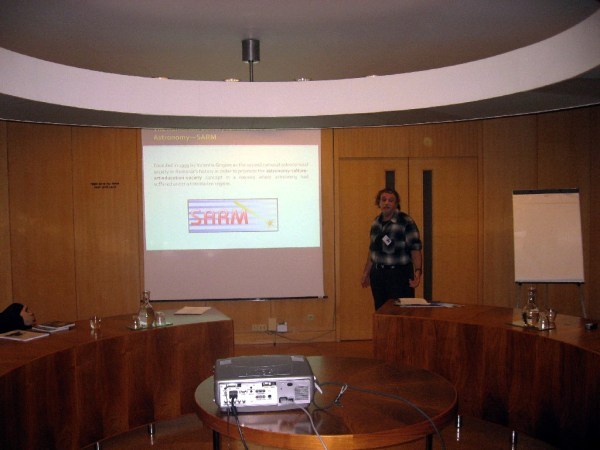
The talk (adorned by
Romanian astrophotographs
by Valentin Grigore, Cristina Tinta, Alex Conu, Mihai Curtasu,
Adrian Sima and Adrian Bruno Sonka,
artworks
by Toma Hirth, Cristina Tinta, Dan Mitrut, Adrian Macinca and Calin Niculae,
and social images from the events of this organization)
presented the open and complex spirit of SARM,
from the original annual Perseid Event to the Cosmopoetry Festival,
from practical astronomy to popular astronomy,
from observational expeditions to astro-creativity,
from the respect for traditions to astrophotography,
from a field for specialists to a gift for people,
from national activities to international co-operations, results and recognitions.
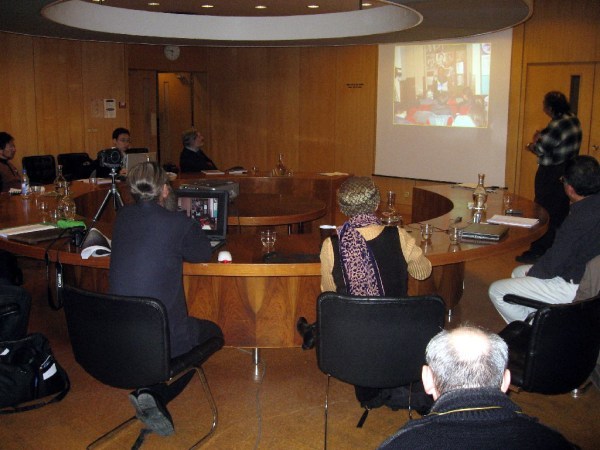
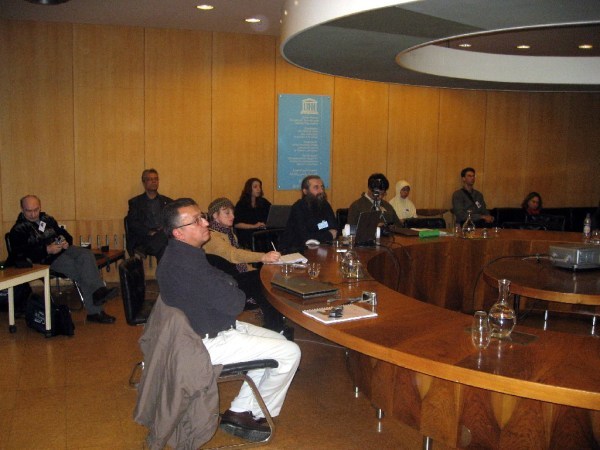
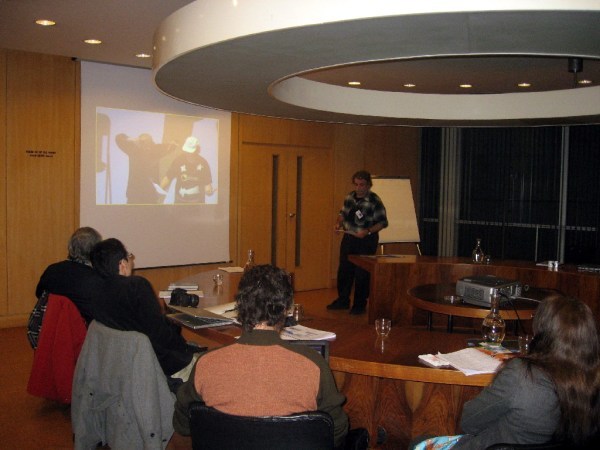
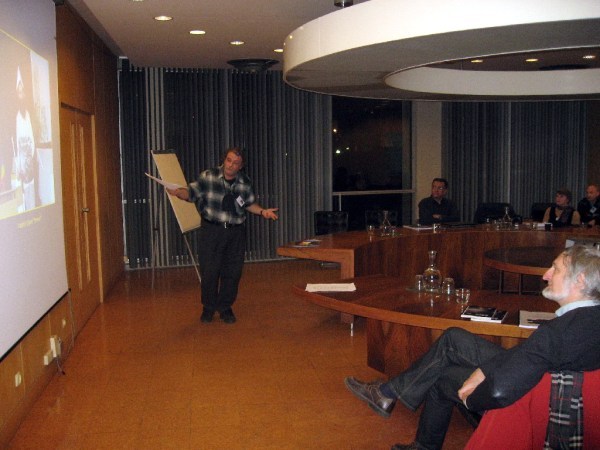
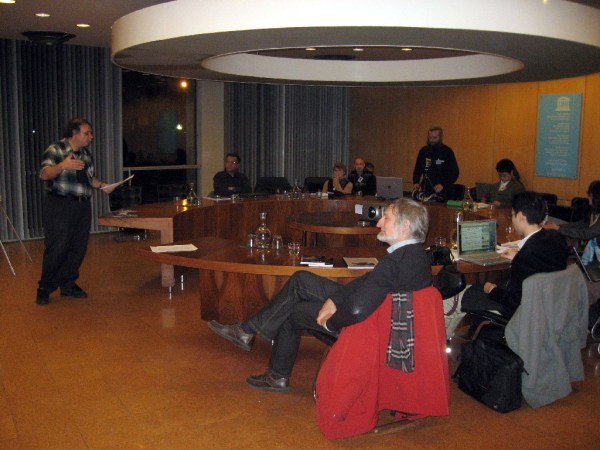
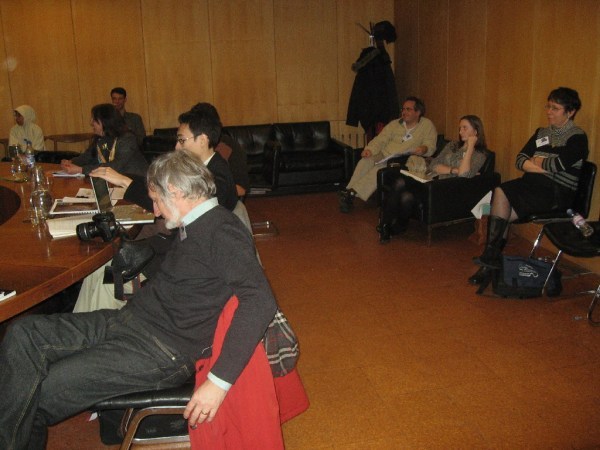
PART II: ASTROPOETRY SHOW
Twelve years after SARM “invented” the Astropoetry Shows
at the International Meteor (Organization) Conference 1997 in Petnica, Yugoslavia
(as a fusion between astropoetry, on a side, and drama, music, humour,
improvisation, arts and décor elements, on the other side,
created especially to be performed at important international events),
the same organization gave, in the second part of its lecture,
its 15th Astropoetry Show
(after 12 at the International Meteor Conferences -
where this kind of spectacle has become the “cultural highlight”-,
1 at NASA’s Leonid Workshop 2000 in Israel,
and 1 at the European Convention of Science Fiction 2001 in Romania)
as a practical demonstration of the cosmopoetry concept.
Although it was a much shorter Astropoetry Show
(with a smaller audience because of the parallel sessions
of the IAU-UNESCO Symposium 260),
performed by only two persons
(for comparison, the 14th Astropoetry Show, at the IMC 2008 in Slovakia,
lasted 2 hours and 5 minutes,
and involved 30 participants from 12 countries from 3 continents),
this was a historical one,
taking in consideration the context:
a premiere among so many premieres at the UNESCO headquarters
during an International Astronomical Union Symposium.
*
PERSONIFYING THE HEAVENLY BODIES
or
TO THE INTERNATIONAL YEAR OF ASTRONOMY 2009
Characters:
Astropoet (Andrei Dorian Gheorghe) and Astro-Photo-Man (Valentin Grigore),
everyone of them reciting his own verses.
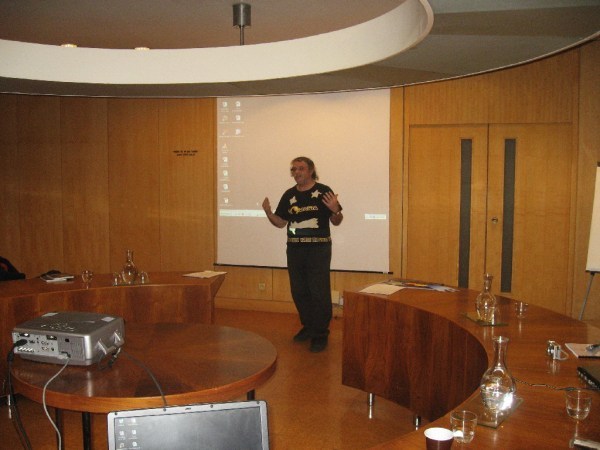
Astropoet recites:
“In the House of the Universe,
Say: «It’s mine!»
But talking to heavenly bodies
You must shine.”
Then he sings:
“I’m a simple man,
And I watch the sky…
Magic bodies fly!
I’m a simple man,
But I know a thing:
I’m a cosmic being!”
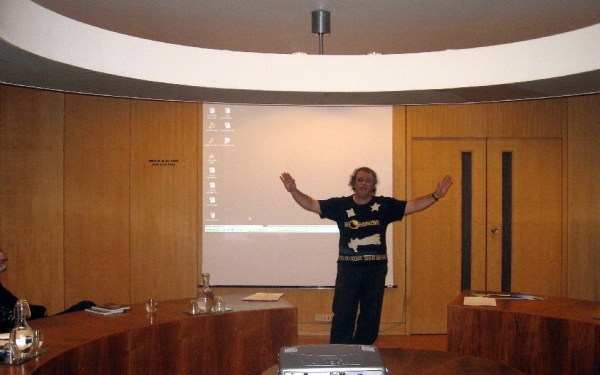
He recites again and throws confetti-meteors:
“Sometimes I feel myself Hercules fighting the Lion
In order to obtain more Leonid meteors.
At other times I speak with other celestial heroes:
With Sagittarius to give more deep sky objects,
Or with Perseus, Orion and the Twin Brothers
To give more Perseids, Orionids, Geminids…”
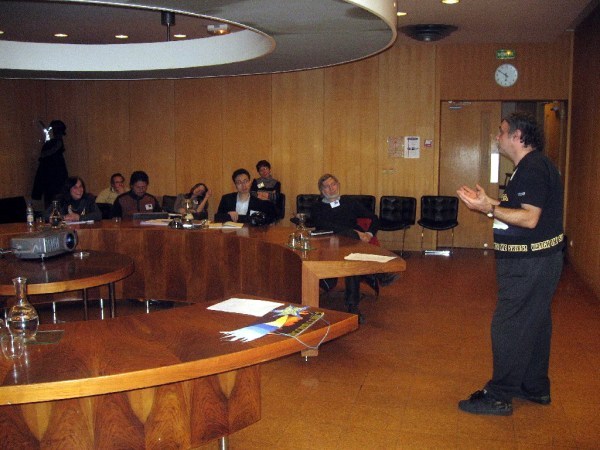
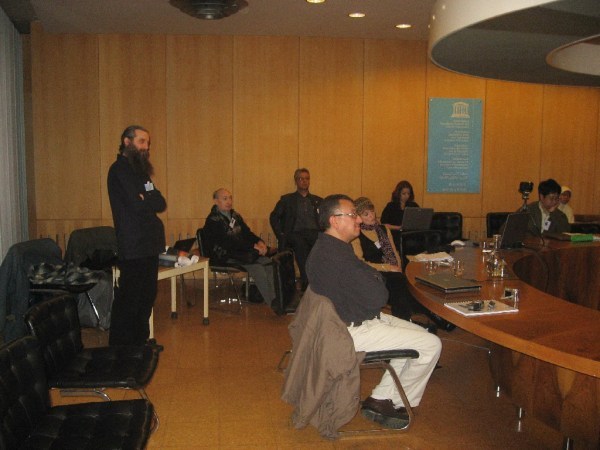
Then he rhythmically performs:
“I prefer a fireball
With an atmospheric fall
Much more than an asteroid
That is lost through the void.”
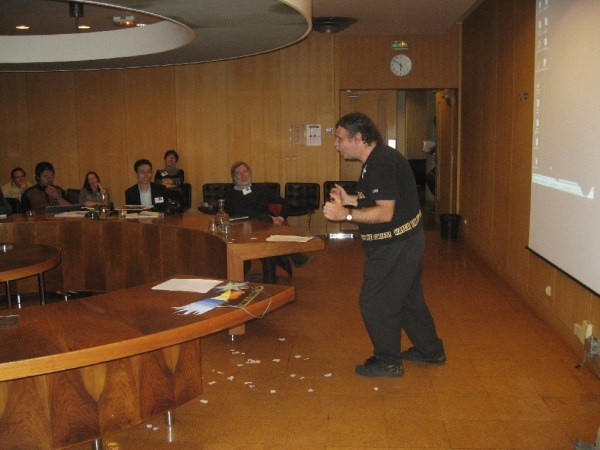
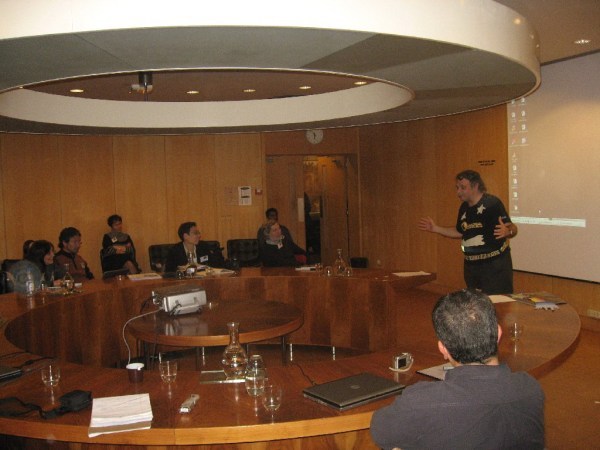
He recites:
“Loving the Milky Way,
Sometimes I try to be just a star ray.”
Then he passionately sings:
“Let me unfold, let me unfold,
Let me love the Universe!
Let me unfold, let me unfold,
Let me love the Universe!
But do not let me in flight
Cause I’m faster than the light!
But do not let me in flight
Cause I’m faster than the light!
…I live in the Milky Way,
But some wine would be O.K.!”
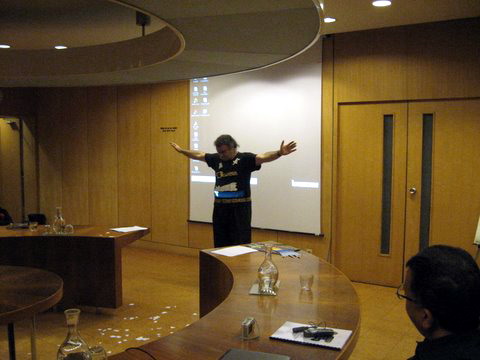
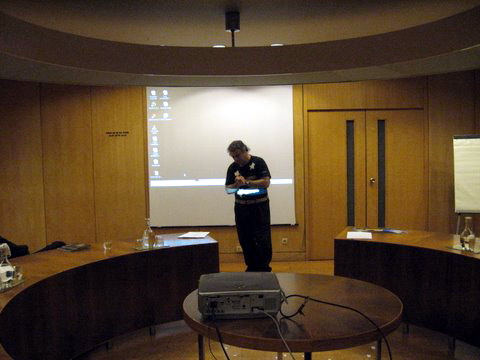
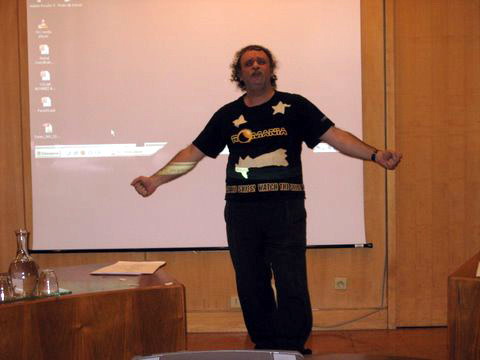
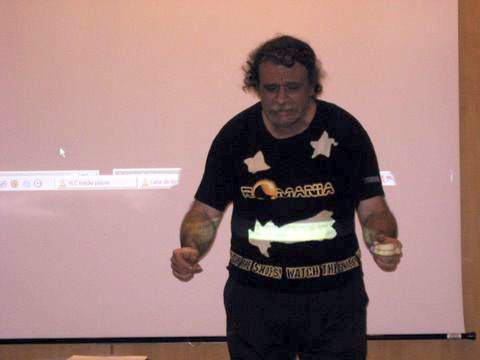
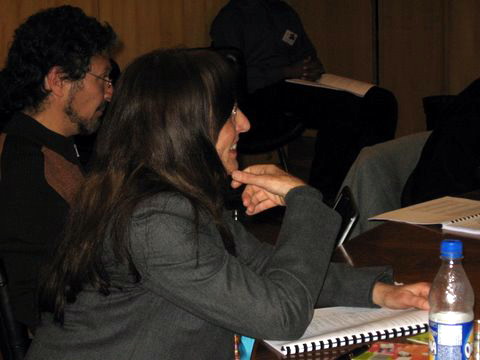
He recites:
“Venerating the Sun,
Many times I try to be his luminous son.
Sometimes I feel myself a planet,
And my orbit is a corridor of hope for my satellites.
At other times I feel myself a comet,
And my flight is a waltz of cosmic freedom. “
He performs a cometary dance.
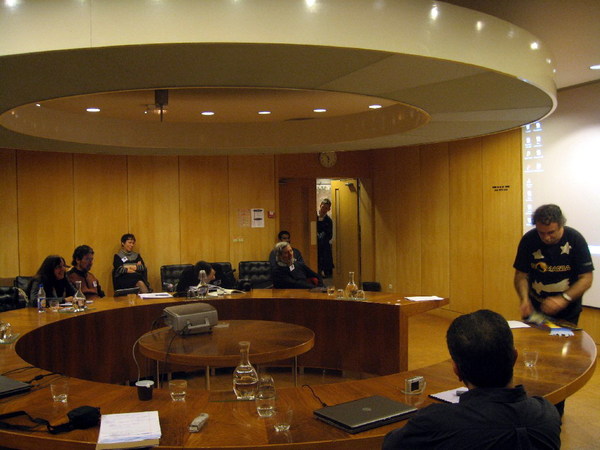
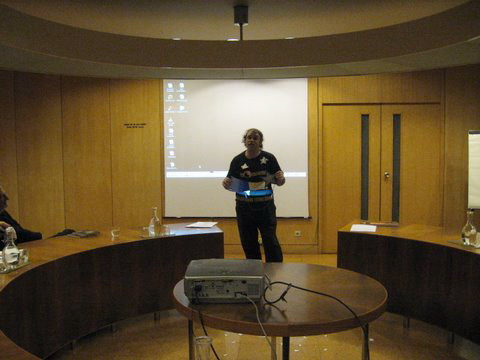
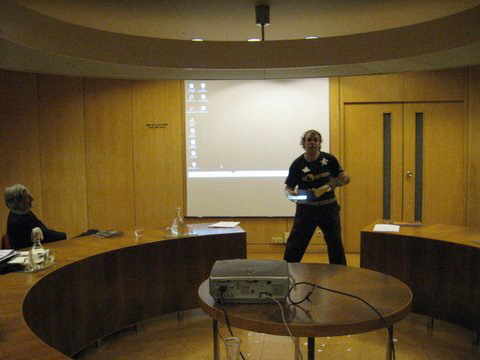
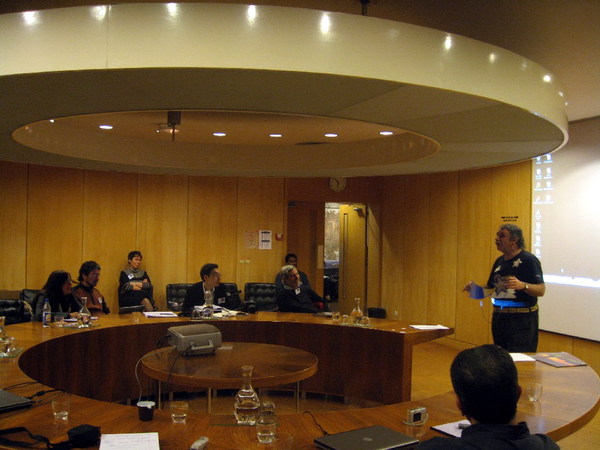
Then he says:
“I also have fine friends on Earth,
such as the Astro-Photo-Man Valentin Grigore,
who will come here clothed in his astrophotographic album
«Targovistea Cosmica».”
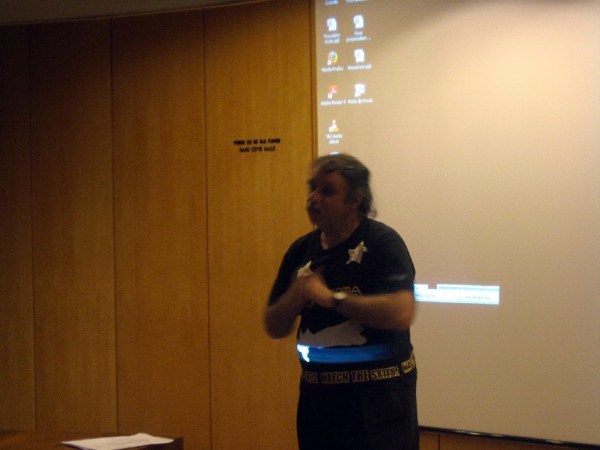
And Astro-Photo-Man, adorned by his own astrophotographs,
comes to the stage,
while Astropoet shows pages from «Targovistea Cosmica».
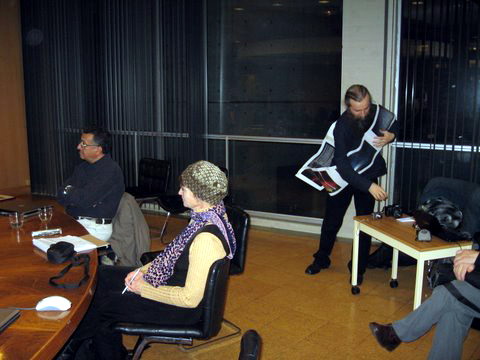
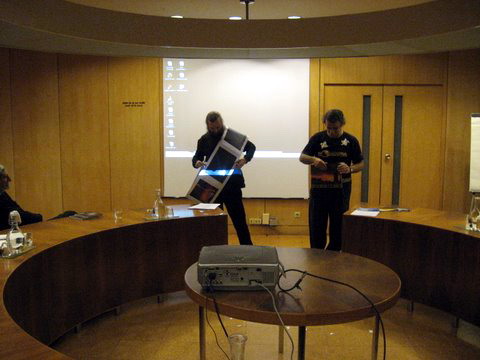
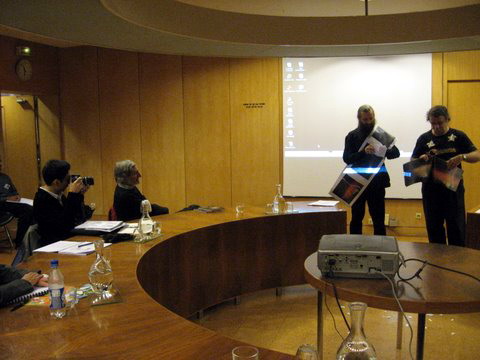
Astro-Photo-Man recites:
“My life fuses into longing for clear skies,
And love for stars, flowers and people.
My wish is to see heavens
Mirroring in human souls.”
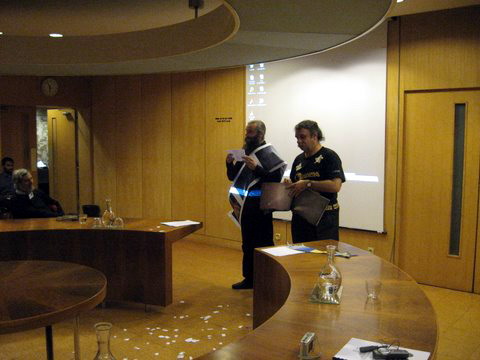
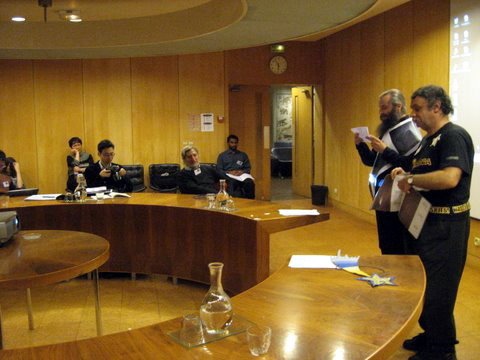
Astropoet sings:
“I’m a simple man,
But I know a thing:
I’m a cosmic being!”
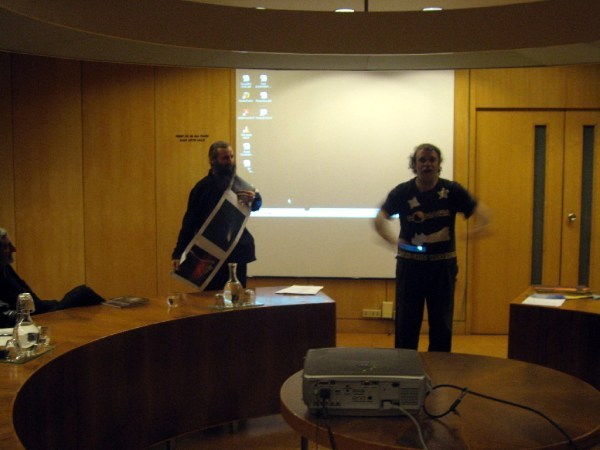
Then he says:
“Thus, finally I have to confess…”
And he performs his rhythmical astro-tipuritura
(the shortest Romanian poetic form):
“The Universe works for me
Thanks to you, …”
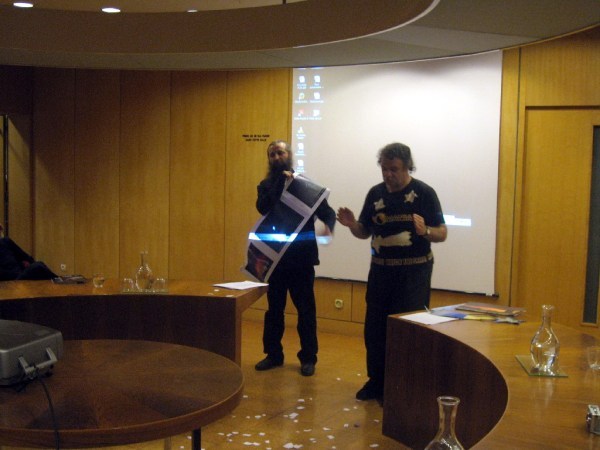
The last word of SARM’s Astropoetry Show is pronounced together
by Astro-Photo-Man and Astropoet:
“…ASTRONOMY!!!”
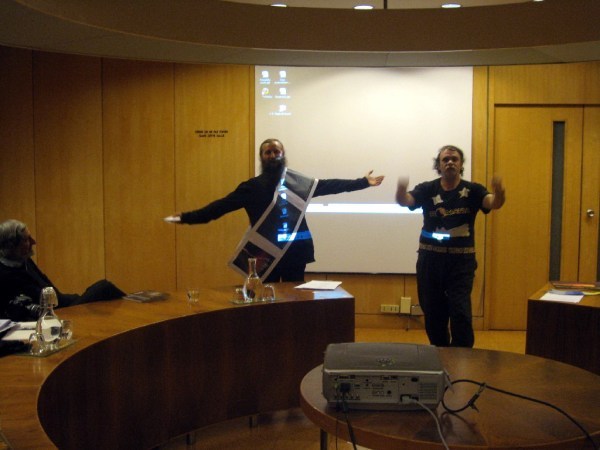
(The End)
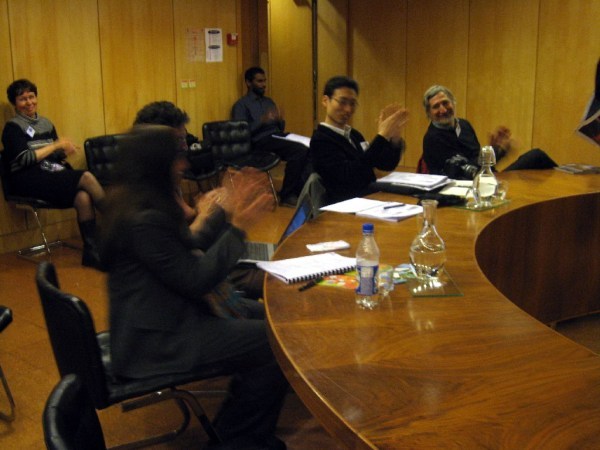
PART III: JOYOUS DEBATES
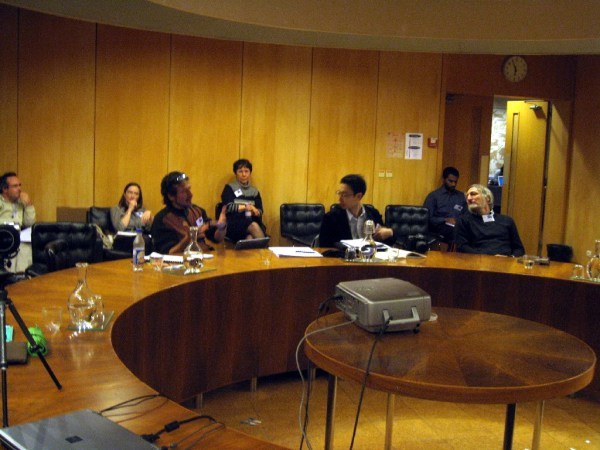
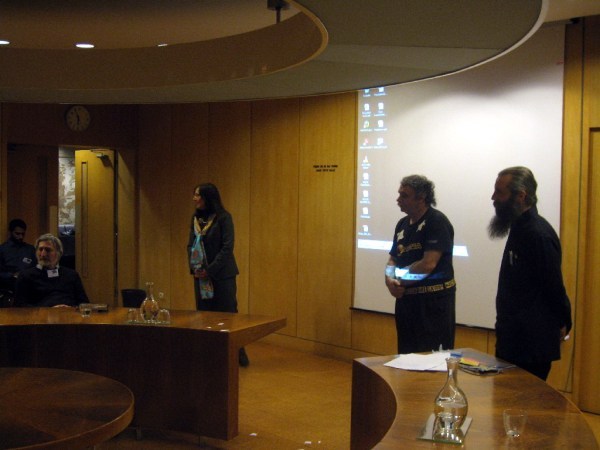
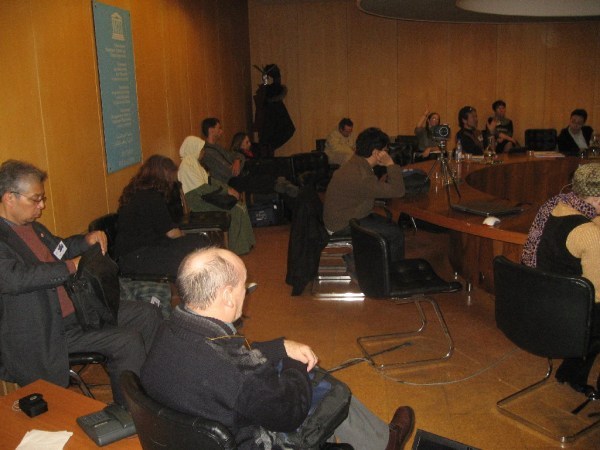
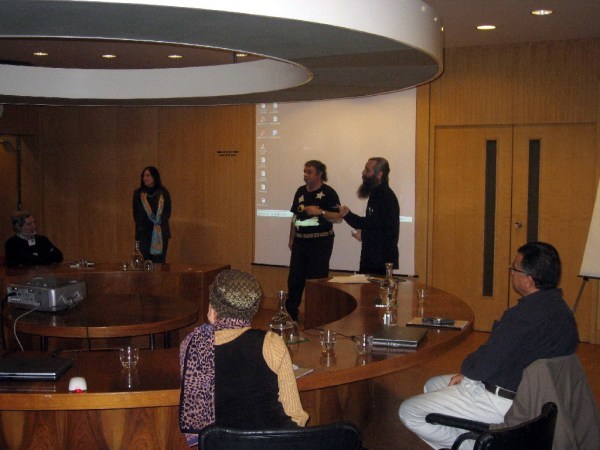
*
Astronomy means life.
Everybody is affected by our cosmic existence,
and I think the role of astronomy is
to bring the sky to the people.
Astronomy means
popularization, education, research
and our daily life.
To do only a part is not enough,
because astronomy is like a whole.
-Valentin Grigore-
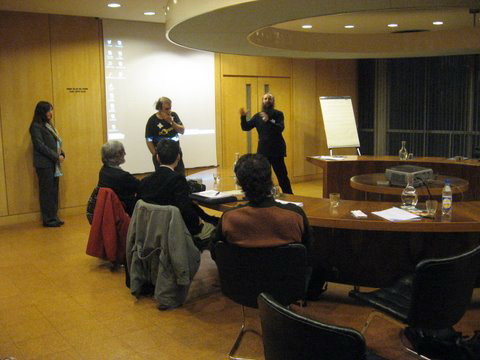
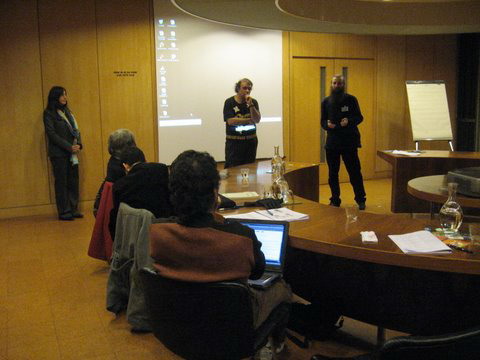
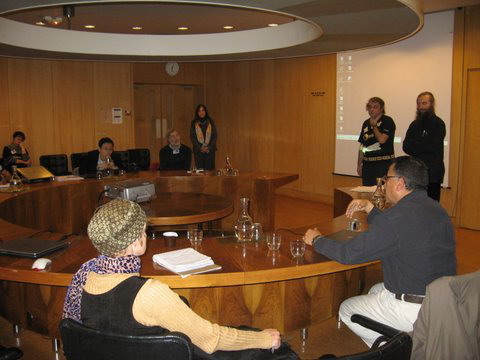
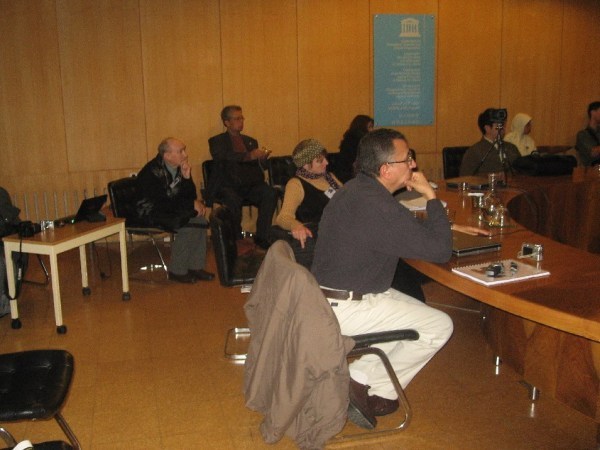
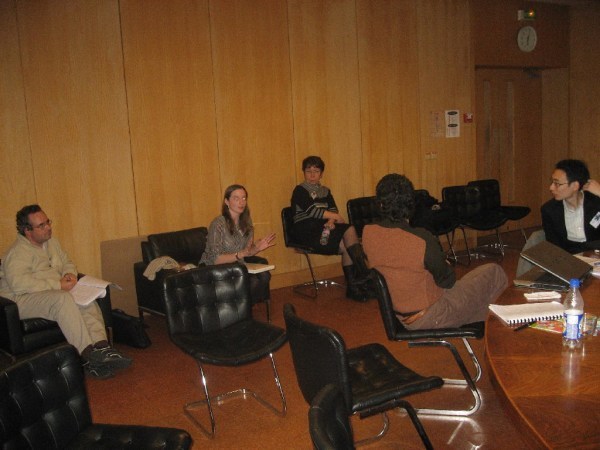
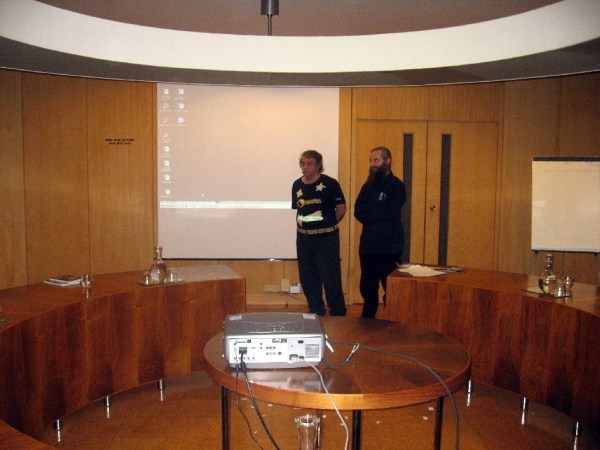
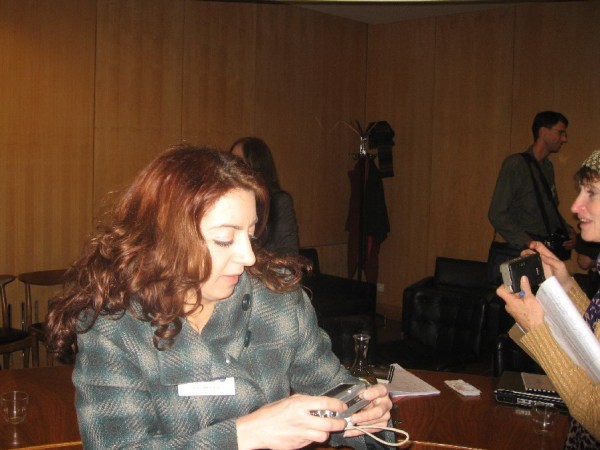
PART IV: HAPPY END
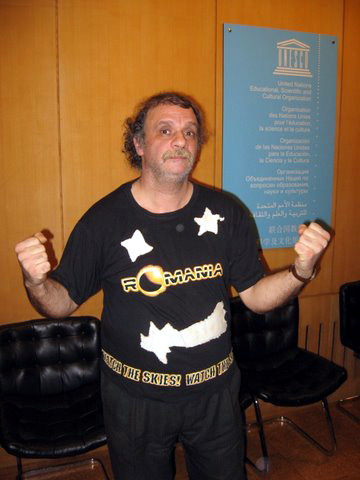
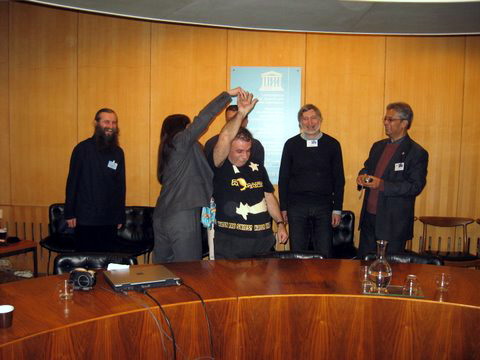
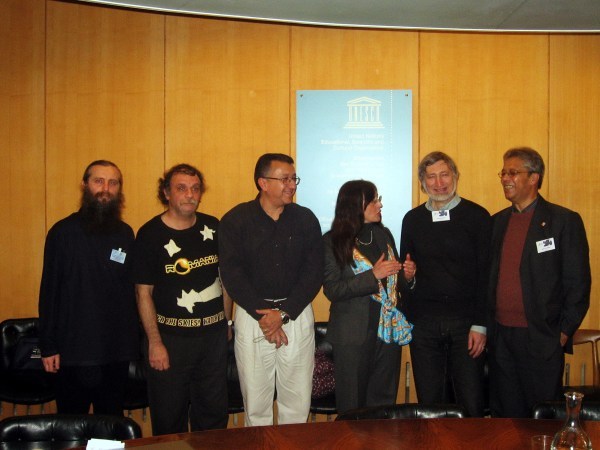
The speakers of the second part of the “Session 23”
of the IAU-UNESCO Symposium 260:
Valentin Grigore (SARM, Romania),
Andrei Dorian Gheorghe (SARM, Romania),
Ilias Fernini (United Arab Emirates University),
Julieta Fierro (Instituto de Astronomia, Mexico, Session Chair,
multiple laureate for her researches in pre-Columbian astronomy
and laureate of UNESCO for the popularization of science),
Jean-Eudes Arlot (Paris Observatory, France),
Shah Rishi (Nepal Academy of Science and Technology):

“Our religions are different,
but astronomy unites all of us”
said finally Ilias Fernini.
*
The heroes of the SARM presentation:
the science journalist Catalin Mosoia (SARM lecture photographer)
and the authors
Andrei Dorian Gheorghe
(SARM Cultural Counsellor, and chronicler of this web project)
and Valentin Grigore
(SARM President, and photographer of this web project):

Thus,
through the participation at these unique UNESCO-IAU super-events,
the Romanian Society for Meteors and Astronomy (SARM)
crowned its almost 16 years of activity
and devotion for people through astronomy,
and 13 years since it incontestably is
(through its numerous astropoetry anthologies included in international circuits
of astronomy, literature and science fiction)
the most active national astronomical society of the world
in astronomical poetry.
*
EPILOGUE
or
GOING FURTHER
UNDER THE SIGN OF GALILEO
-verses by Andrei Dorian Gheorghe and photos by Valentin Grigore-
Every time
after a trip in the world,
people feel stronger when they come home.

Every time
after a trip in the Universe,
people feel home around their sun…

…whence Galileo’s eyes
gloriously drop
astronomical tears of earthly love
as powers for a new great adventure
under the Creator’s protection.
***
HOME